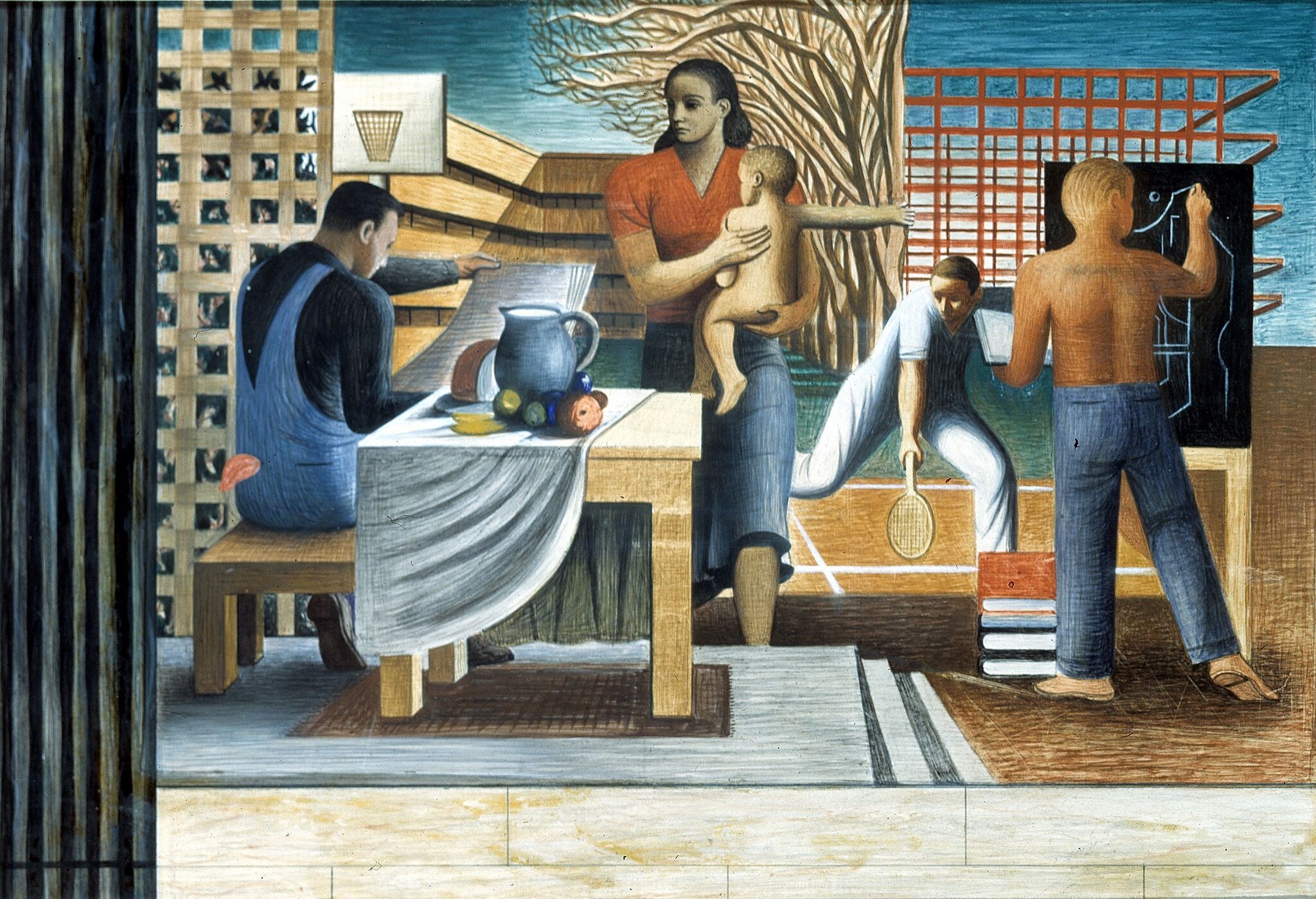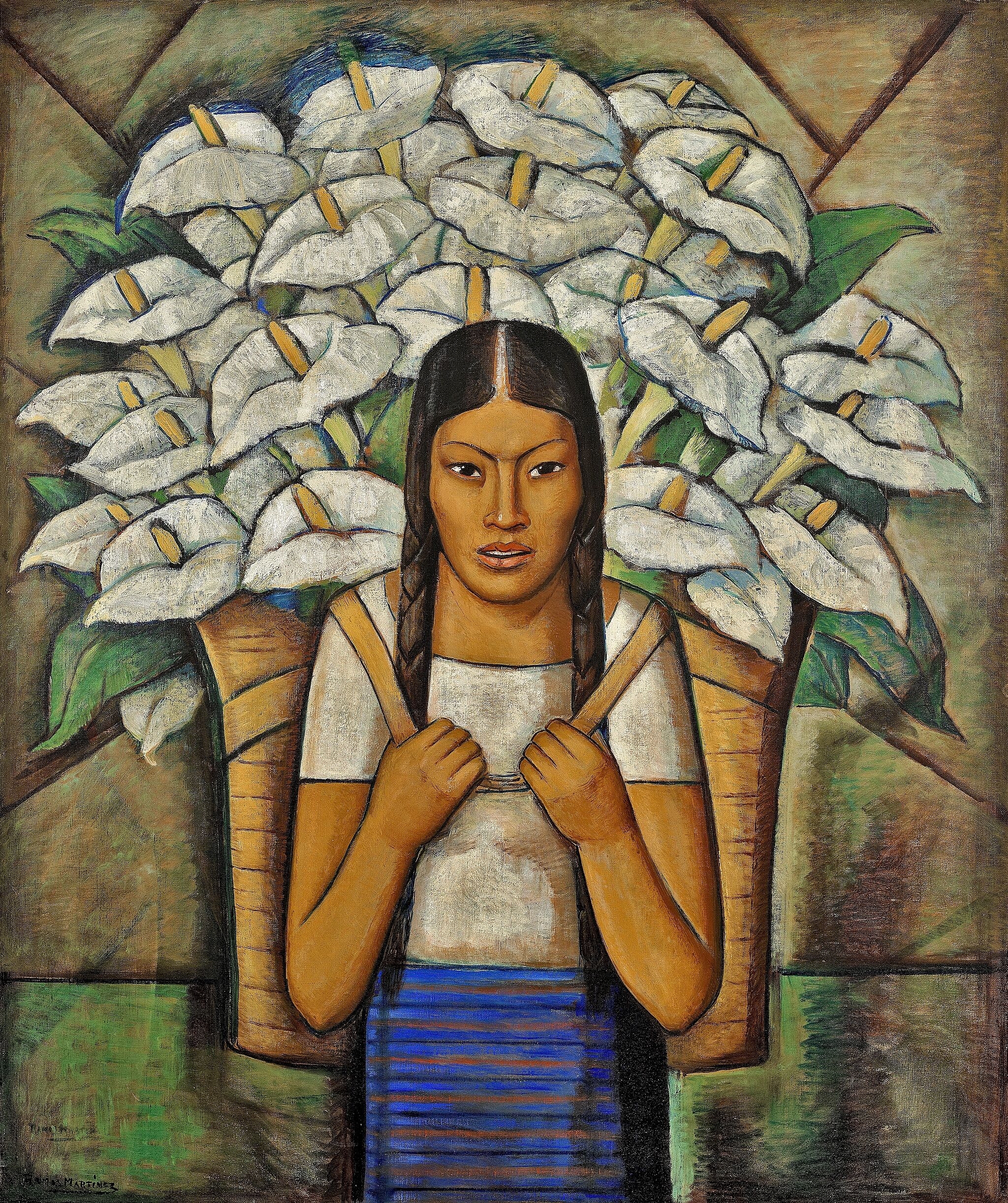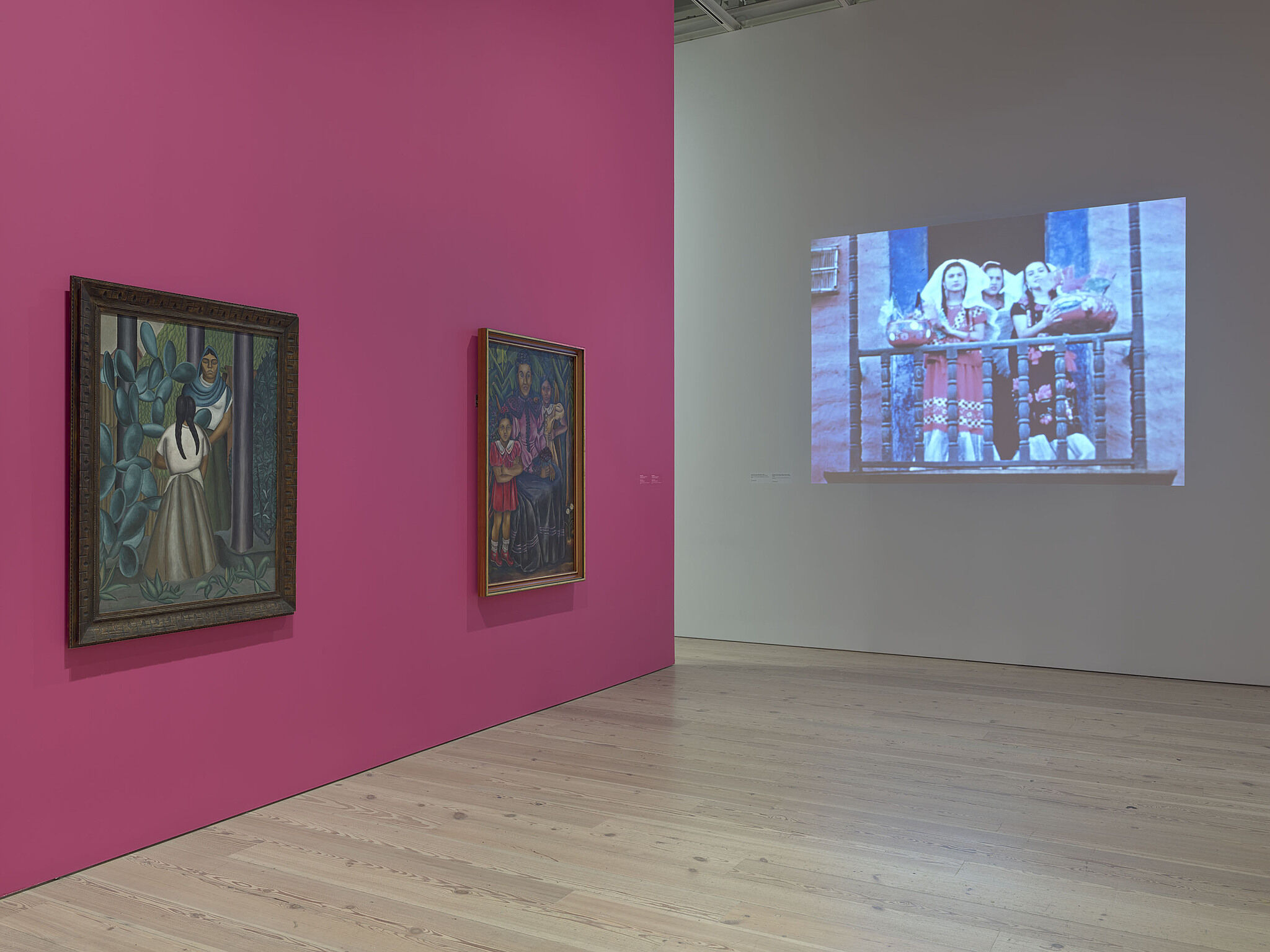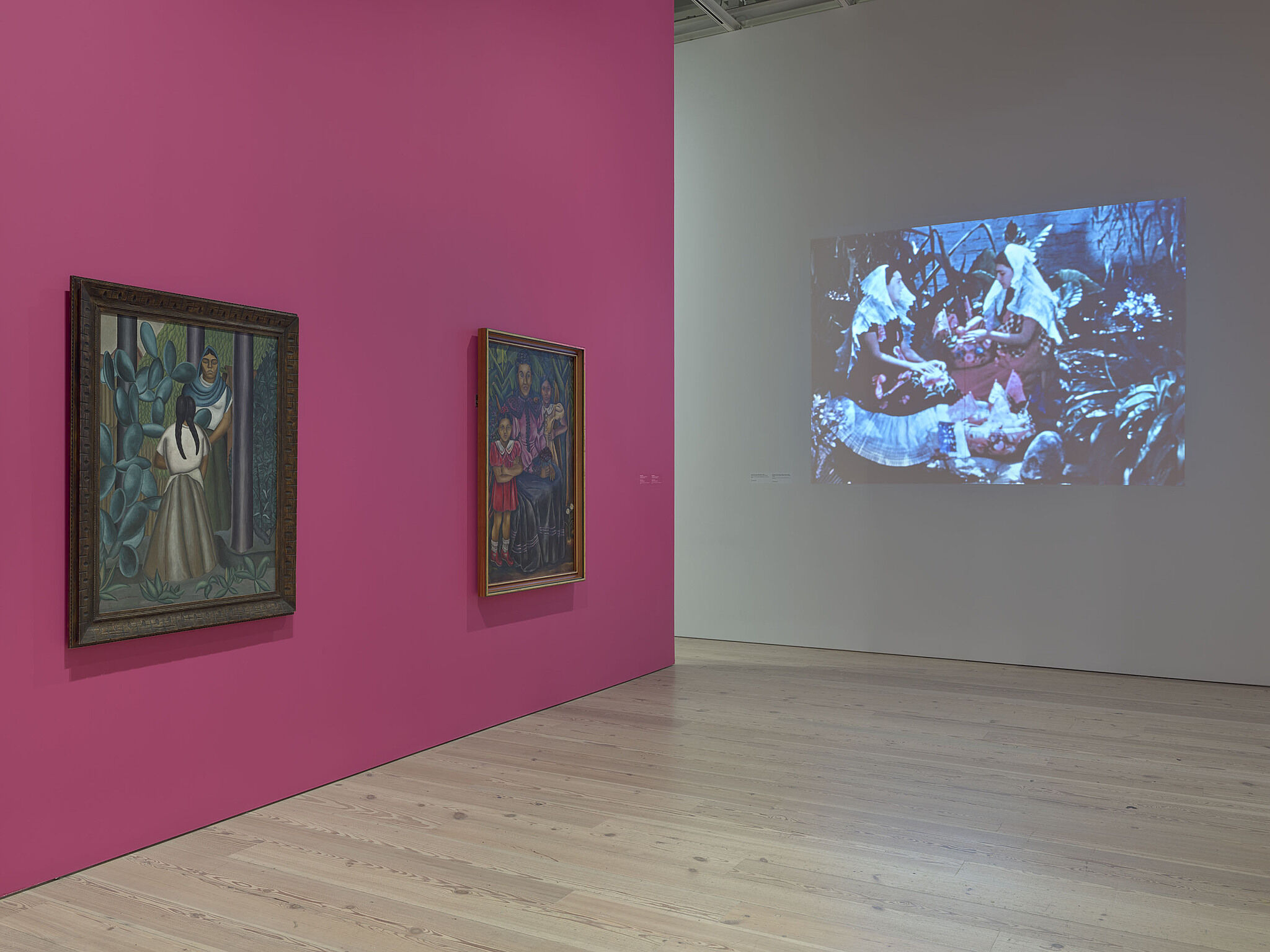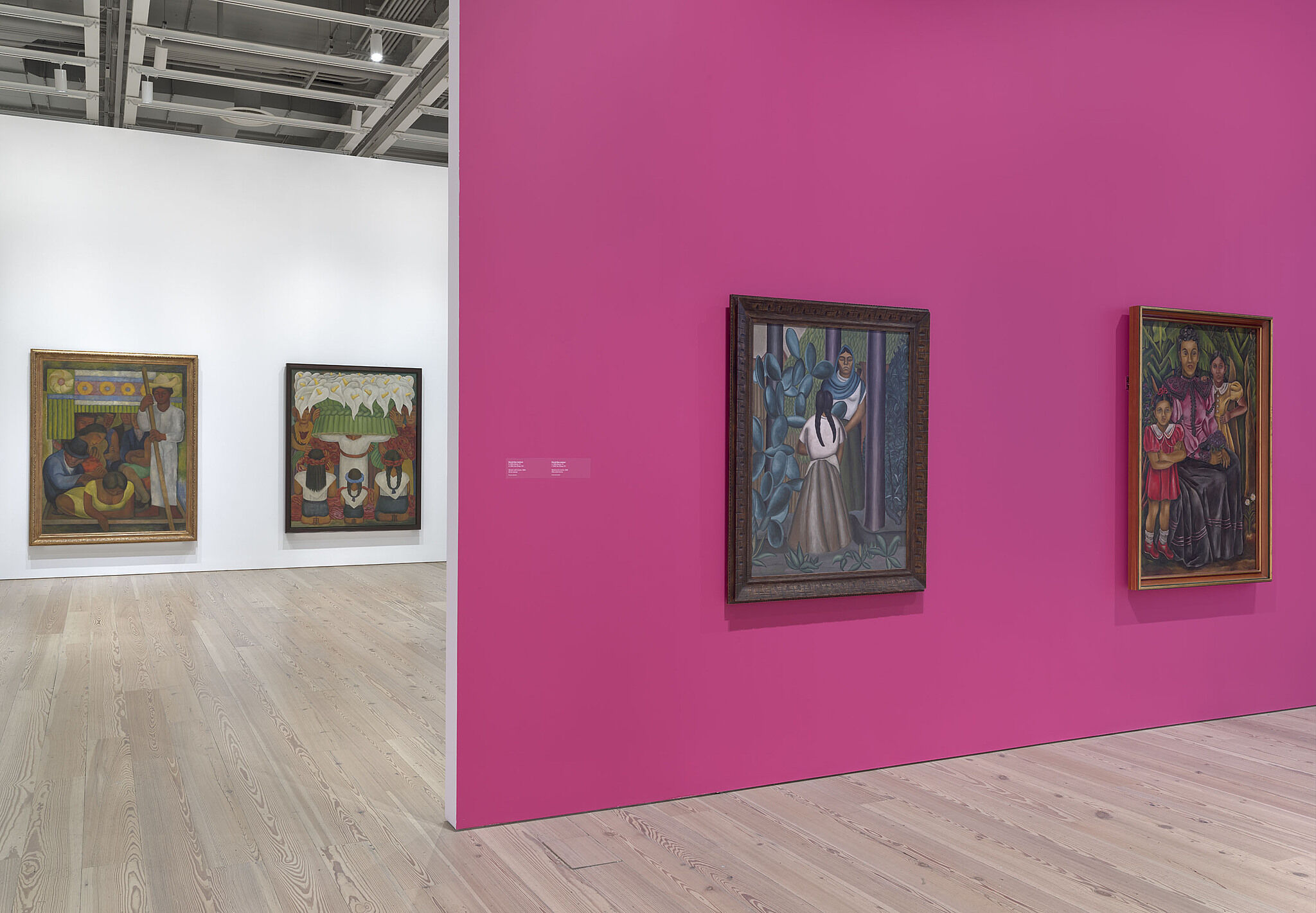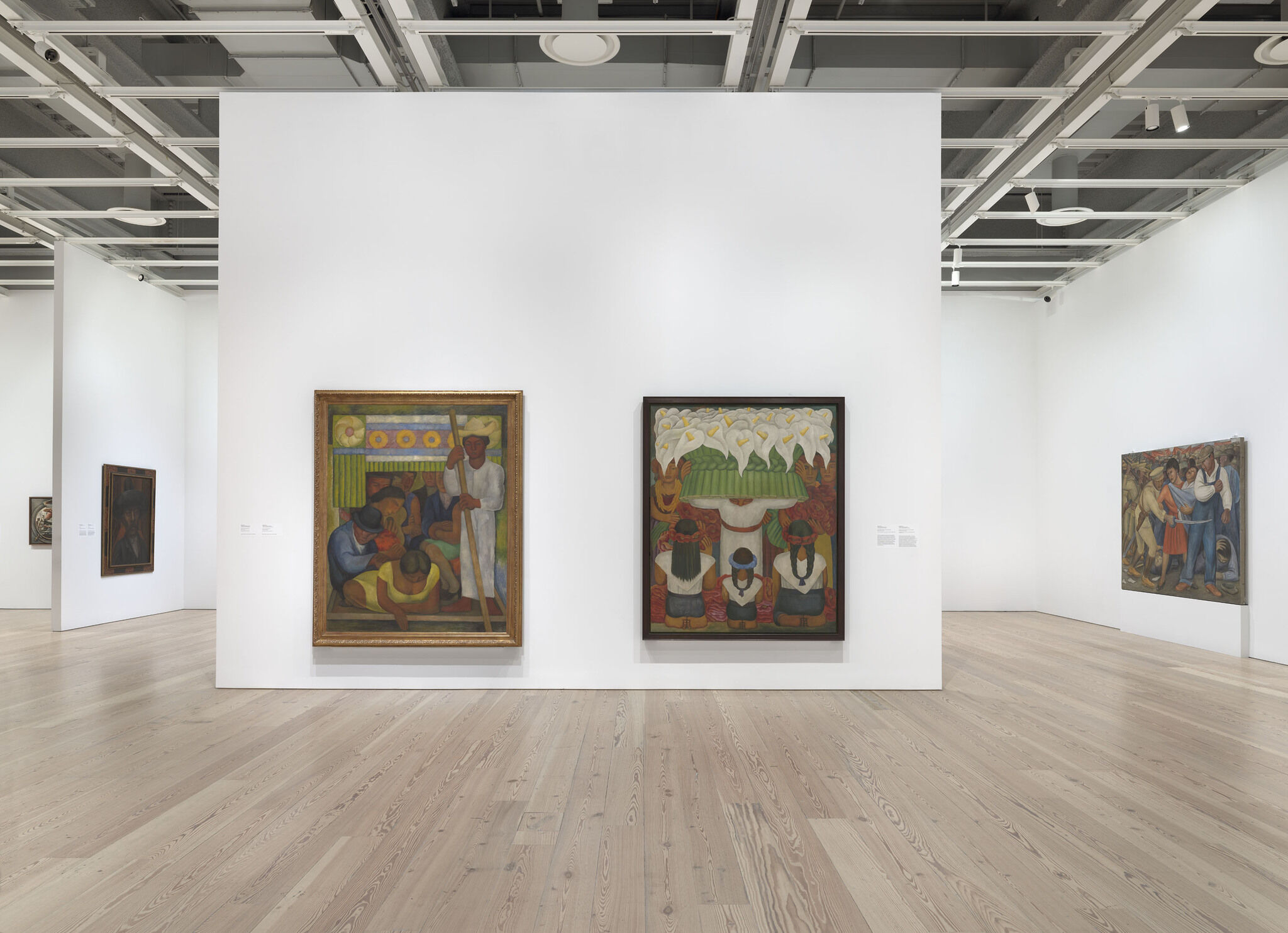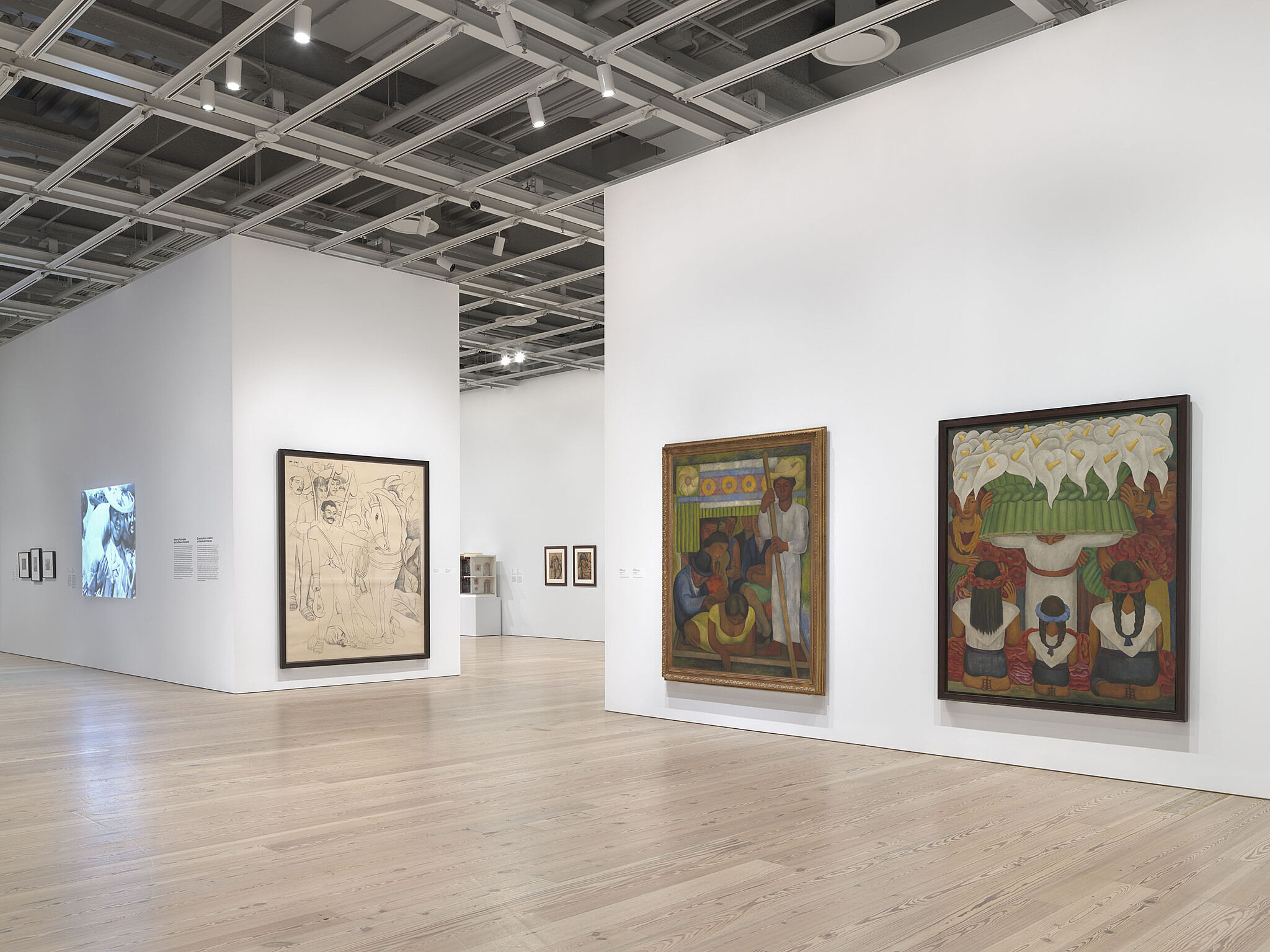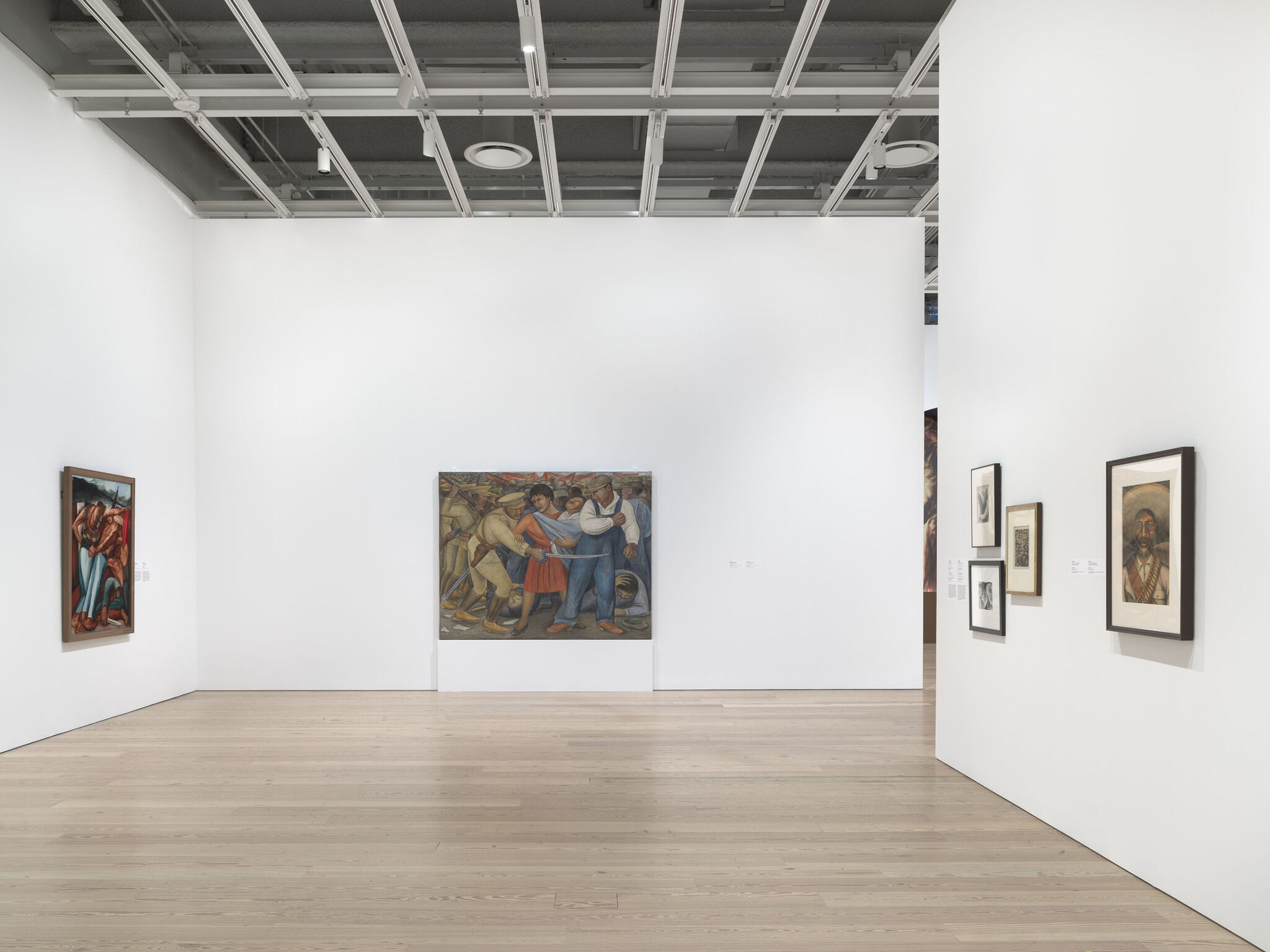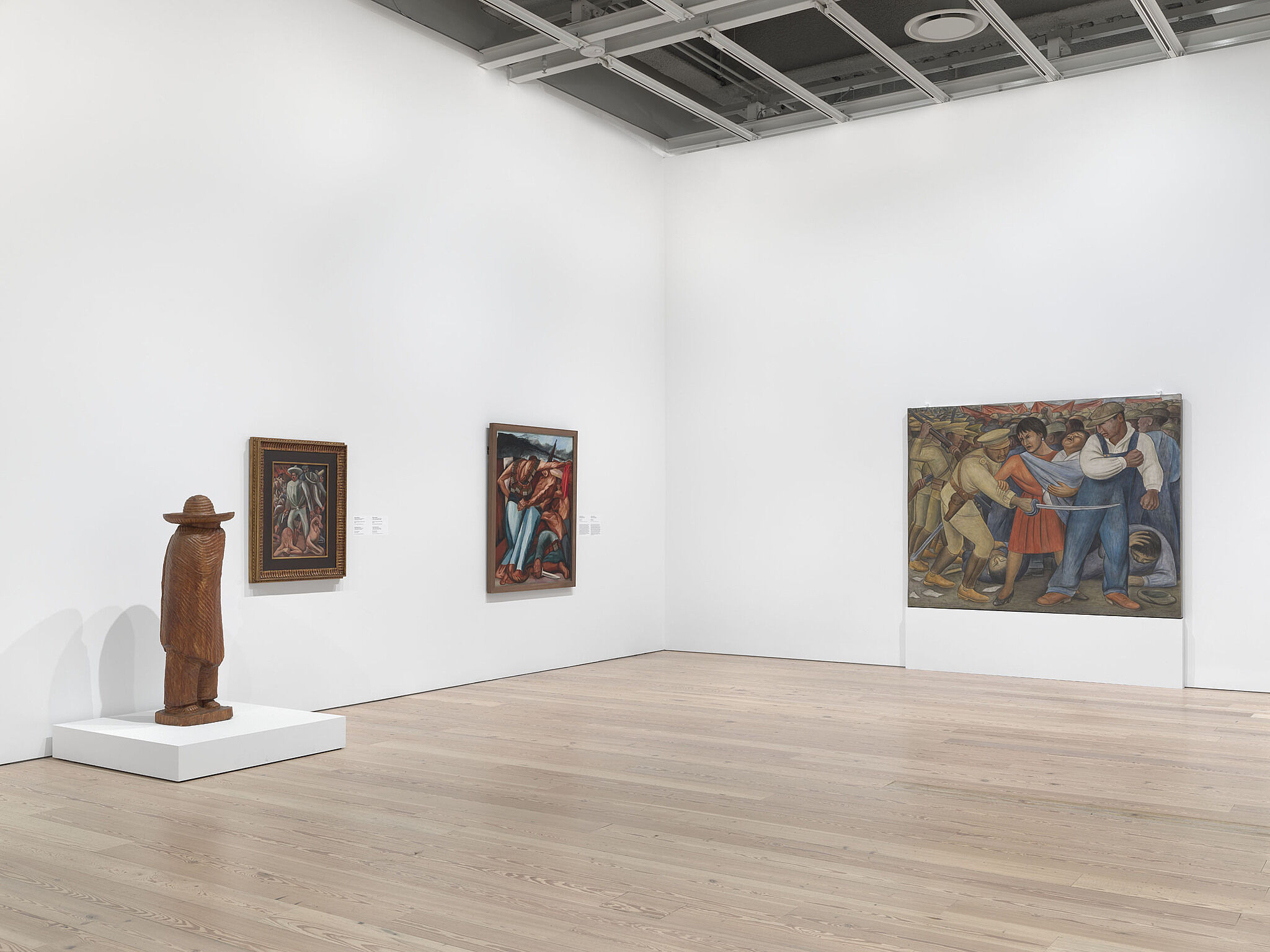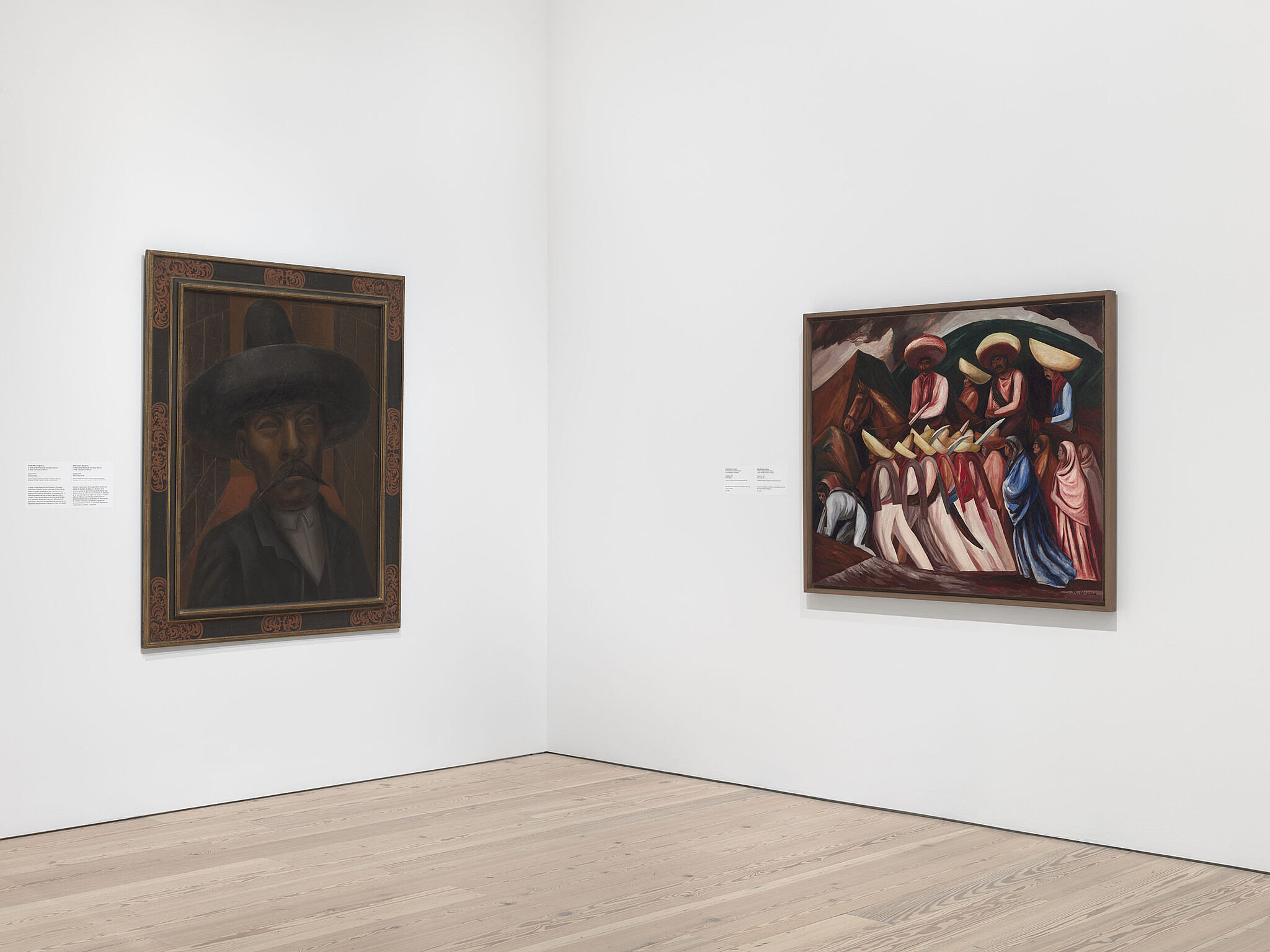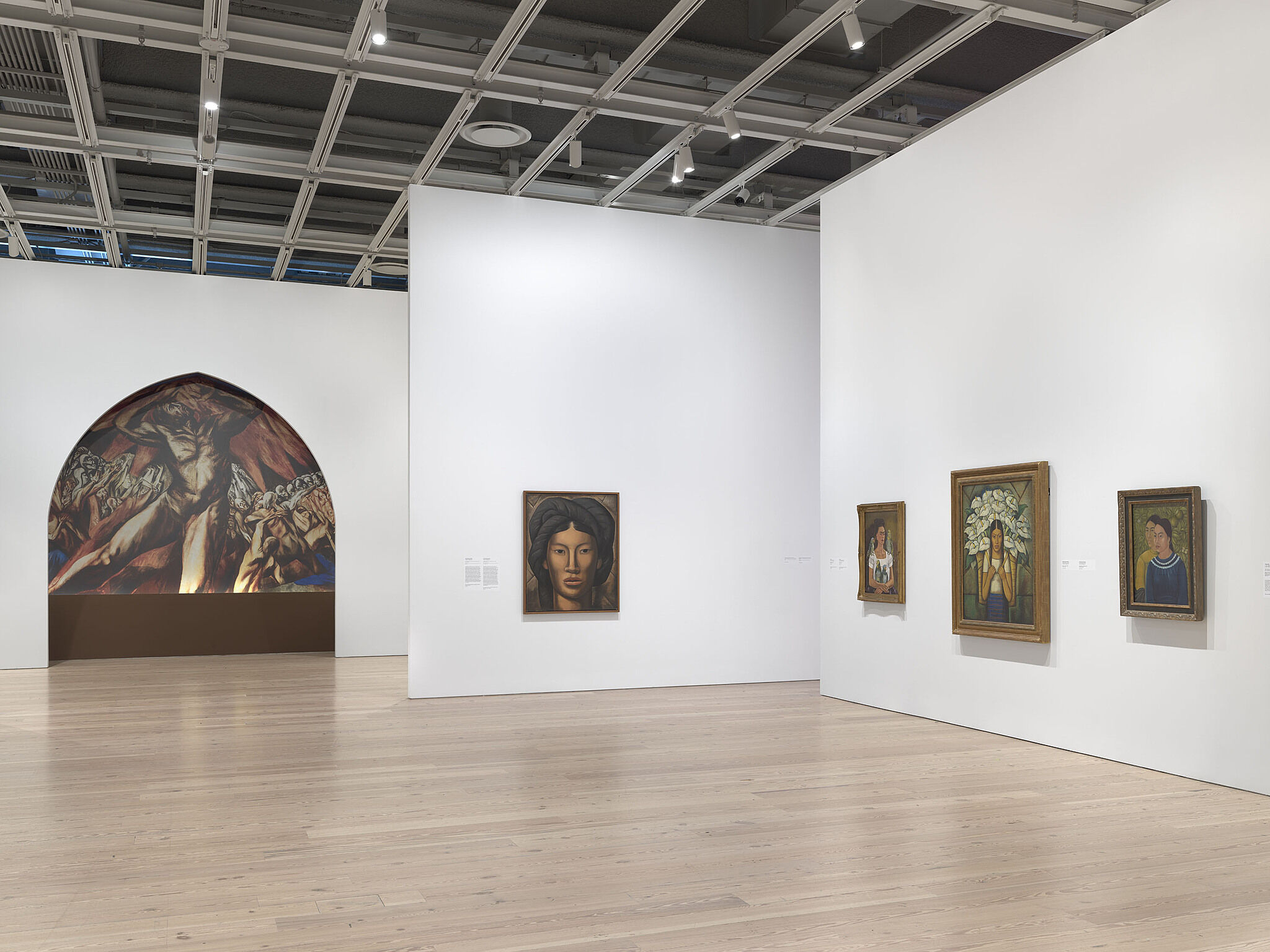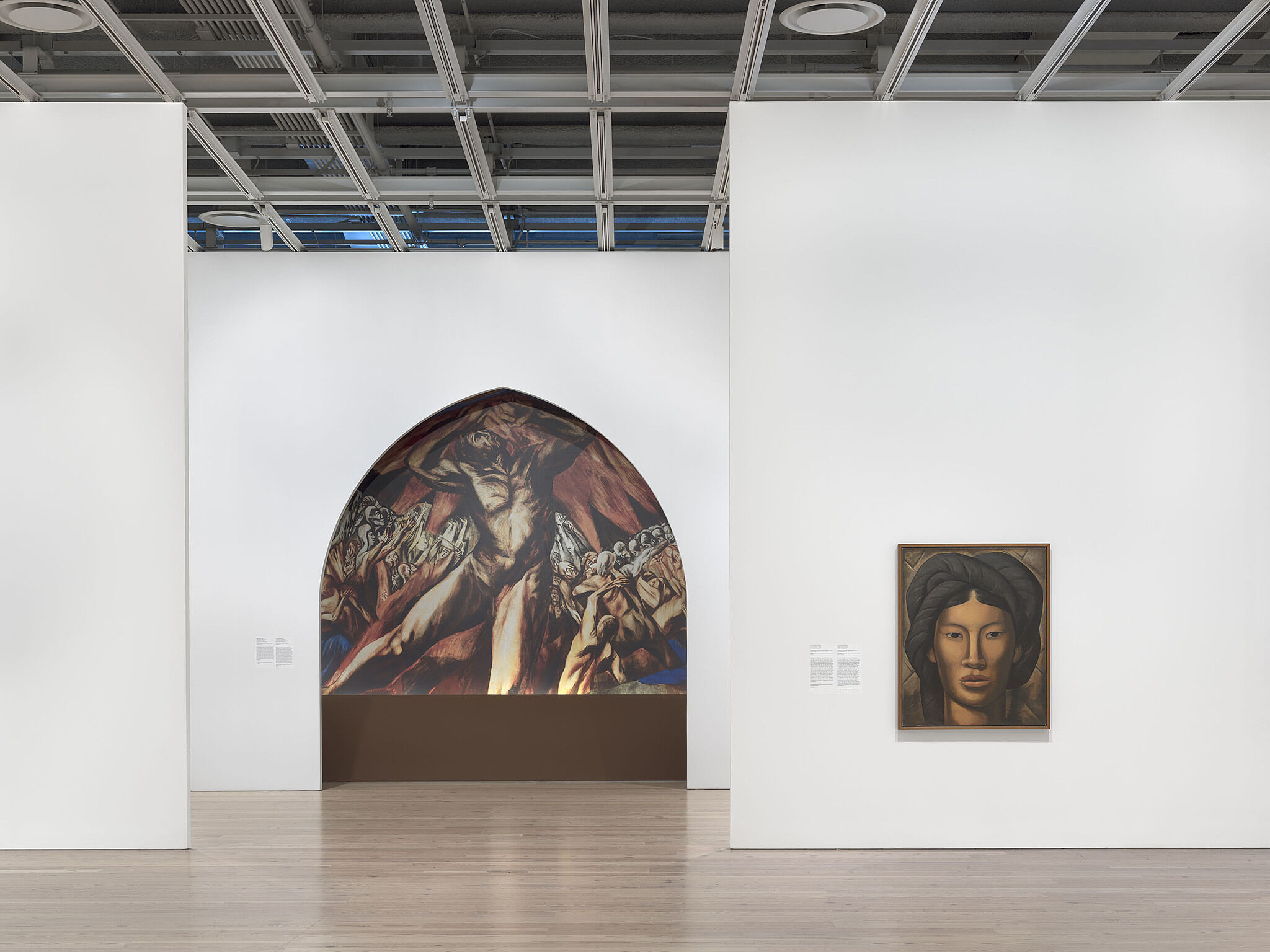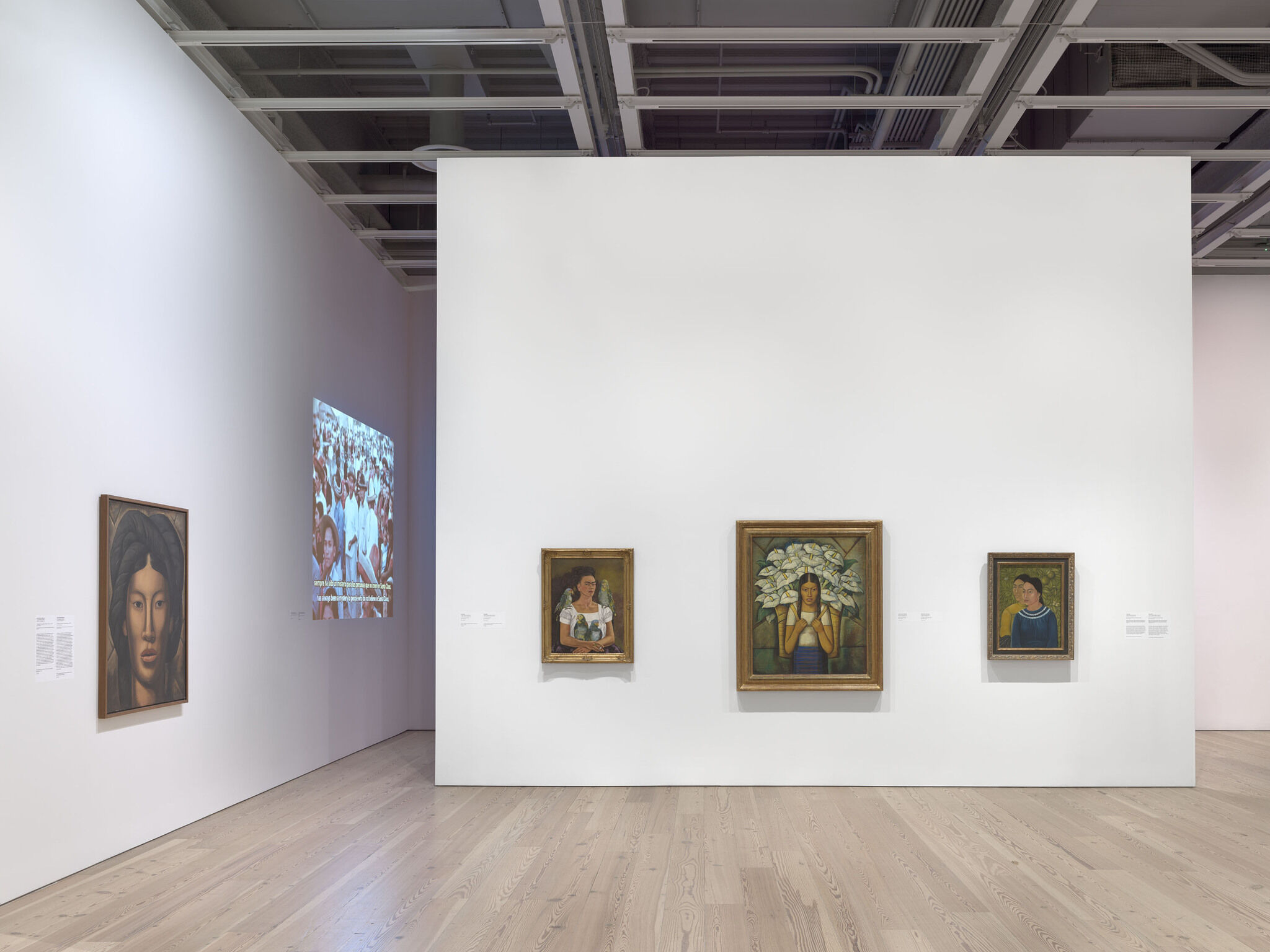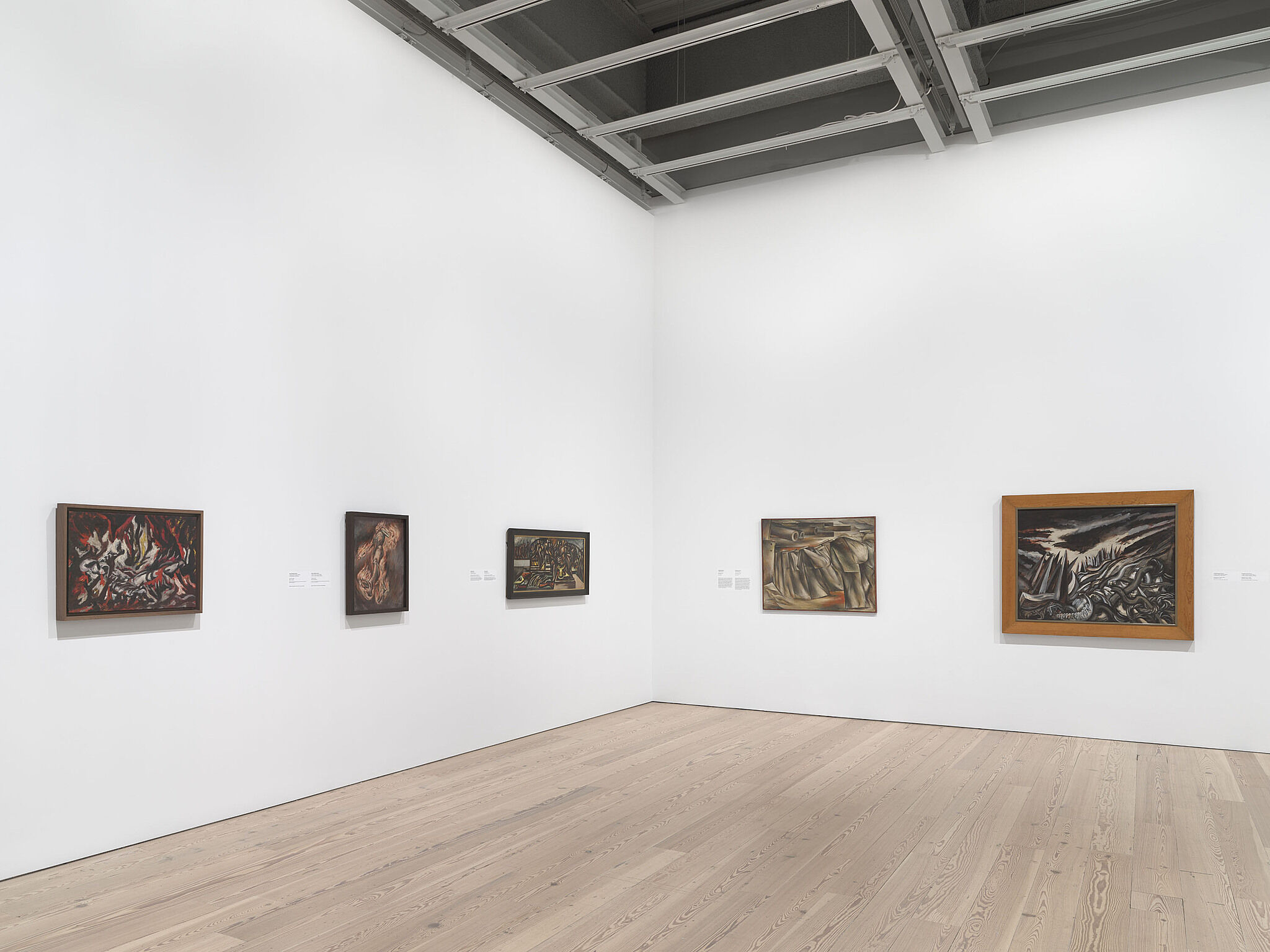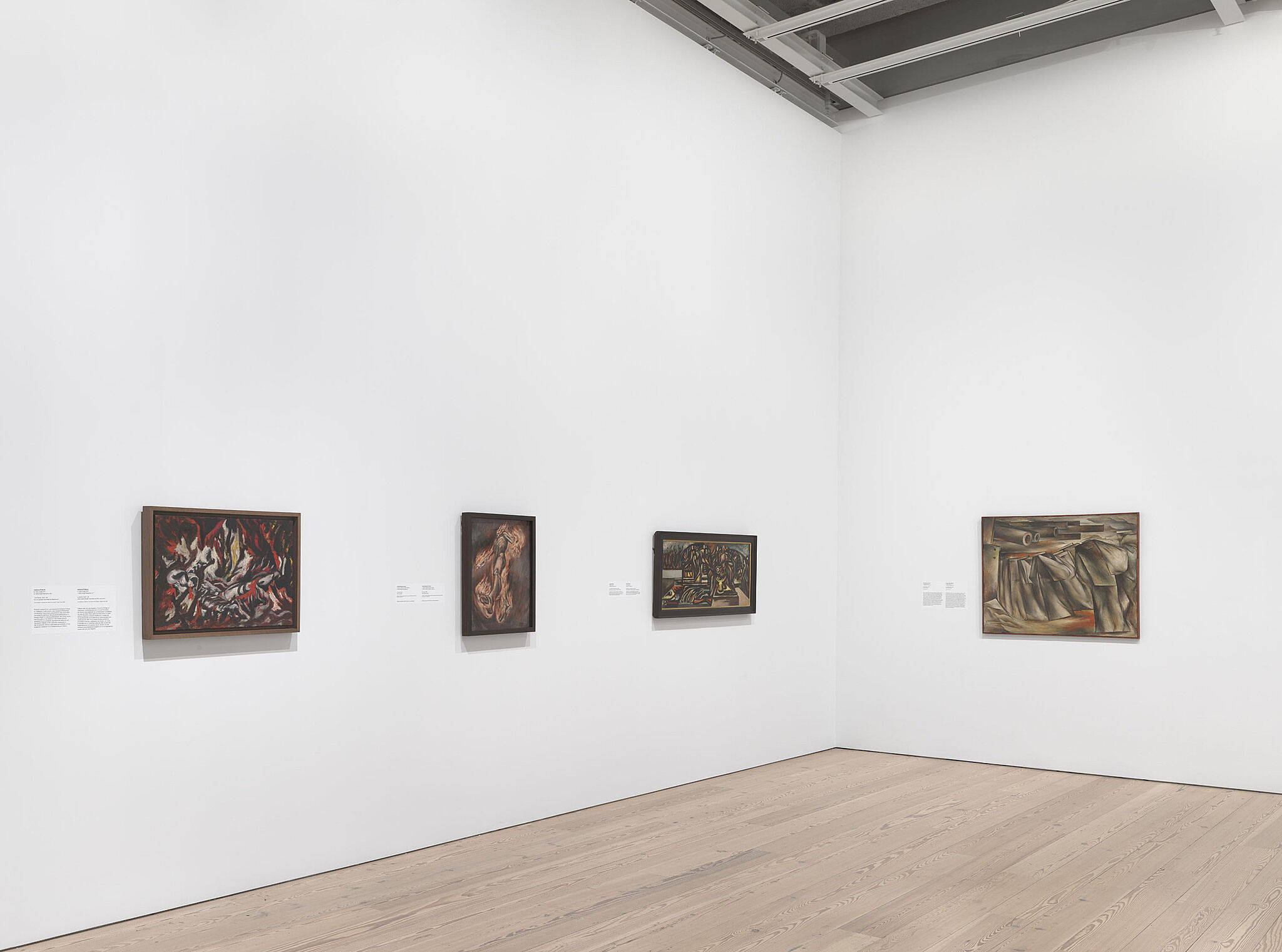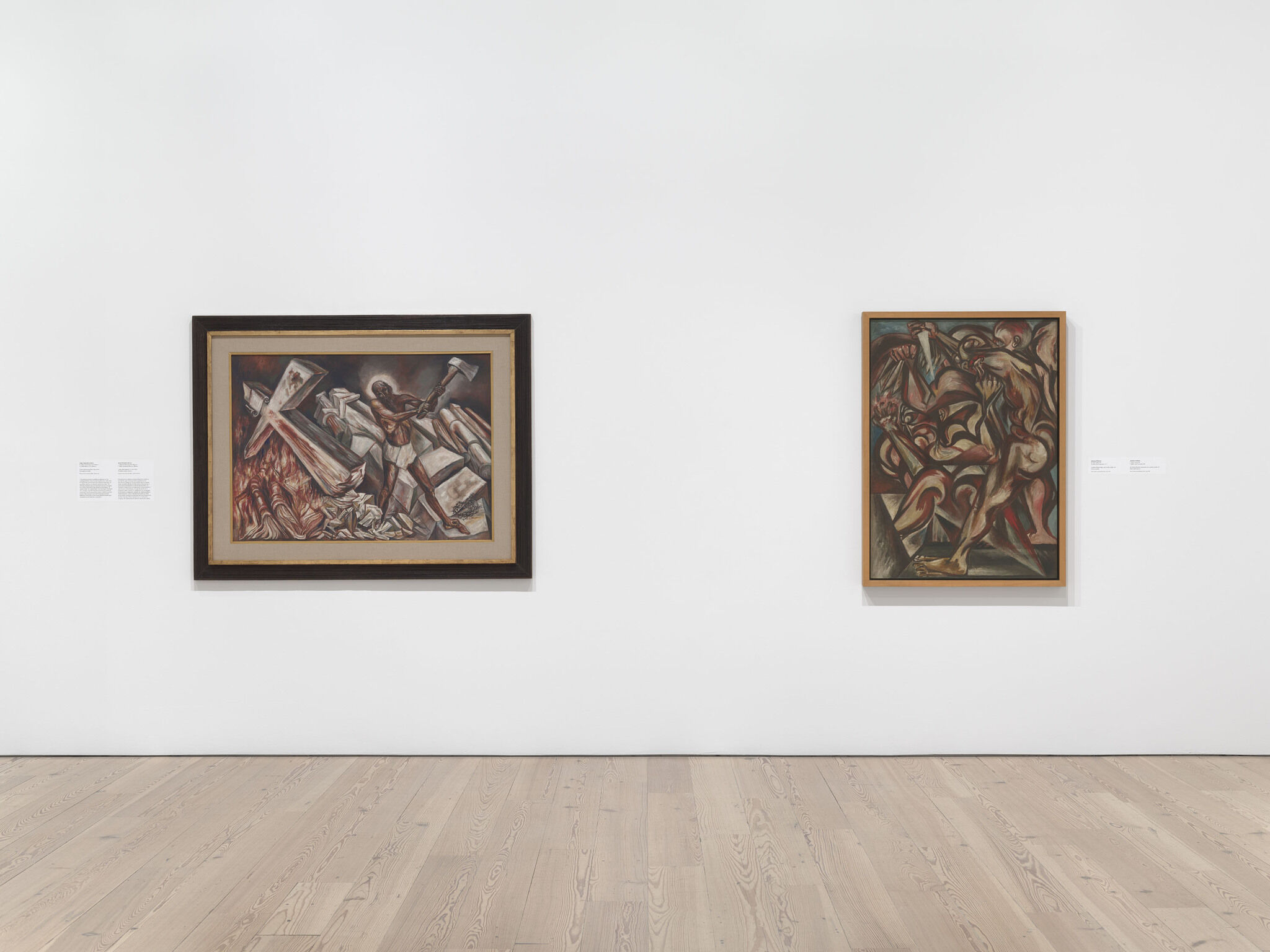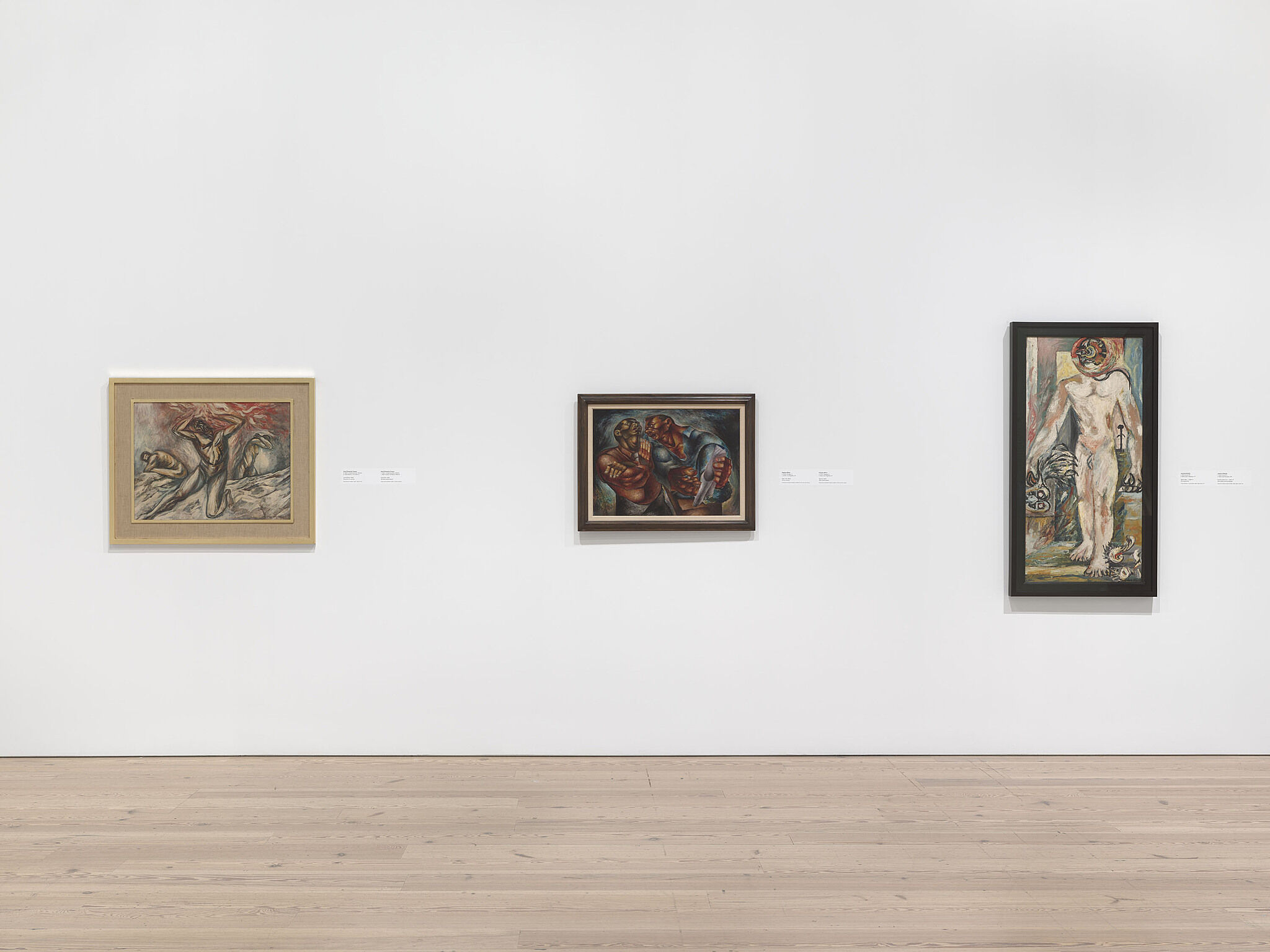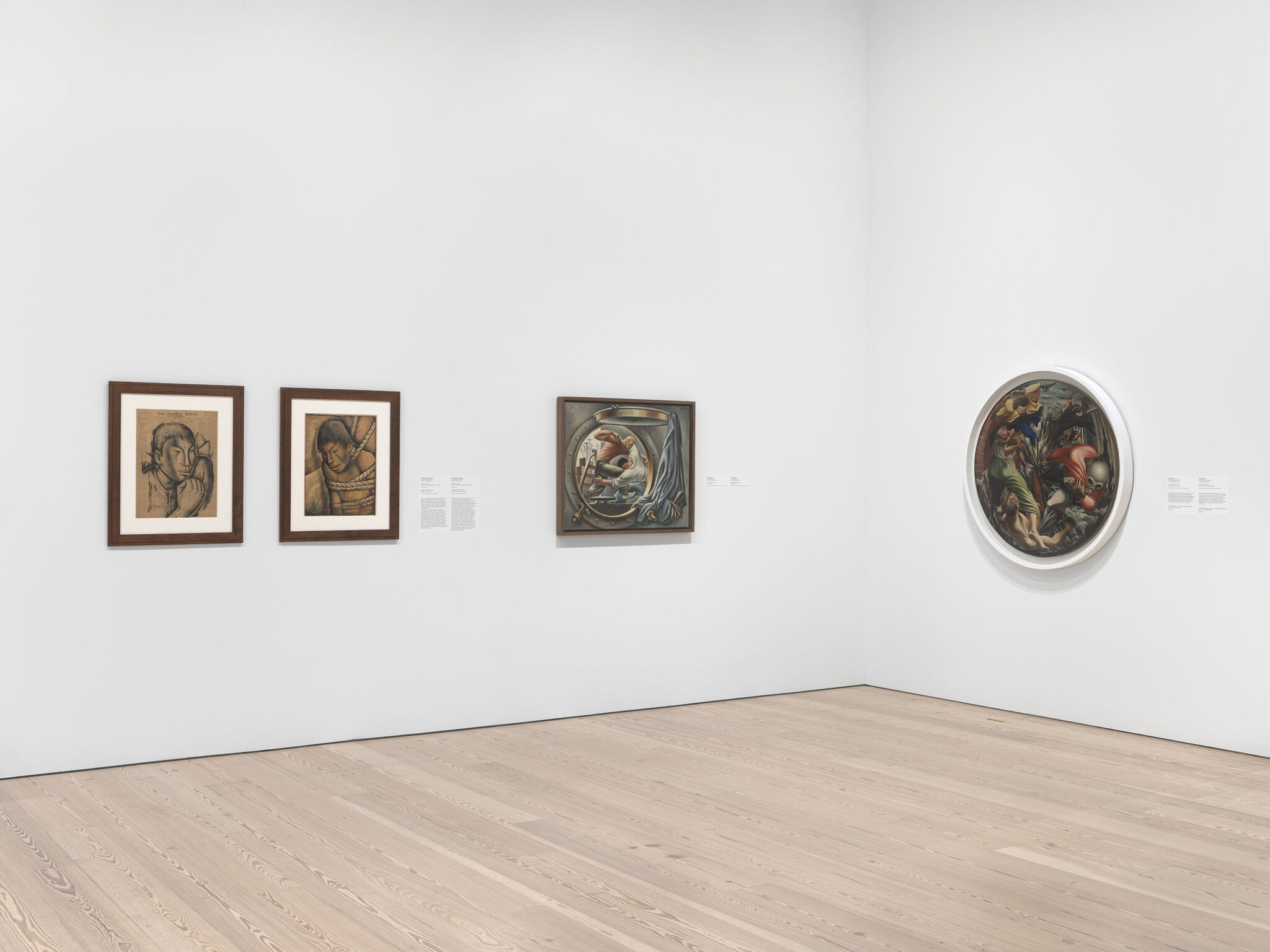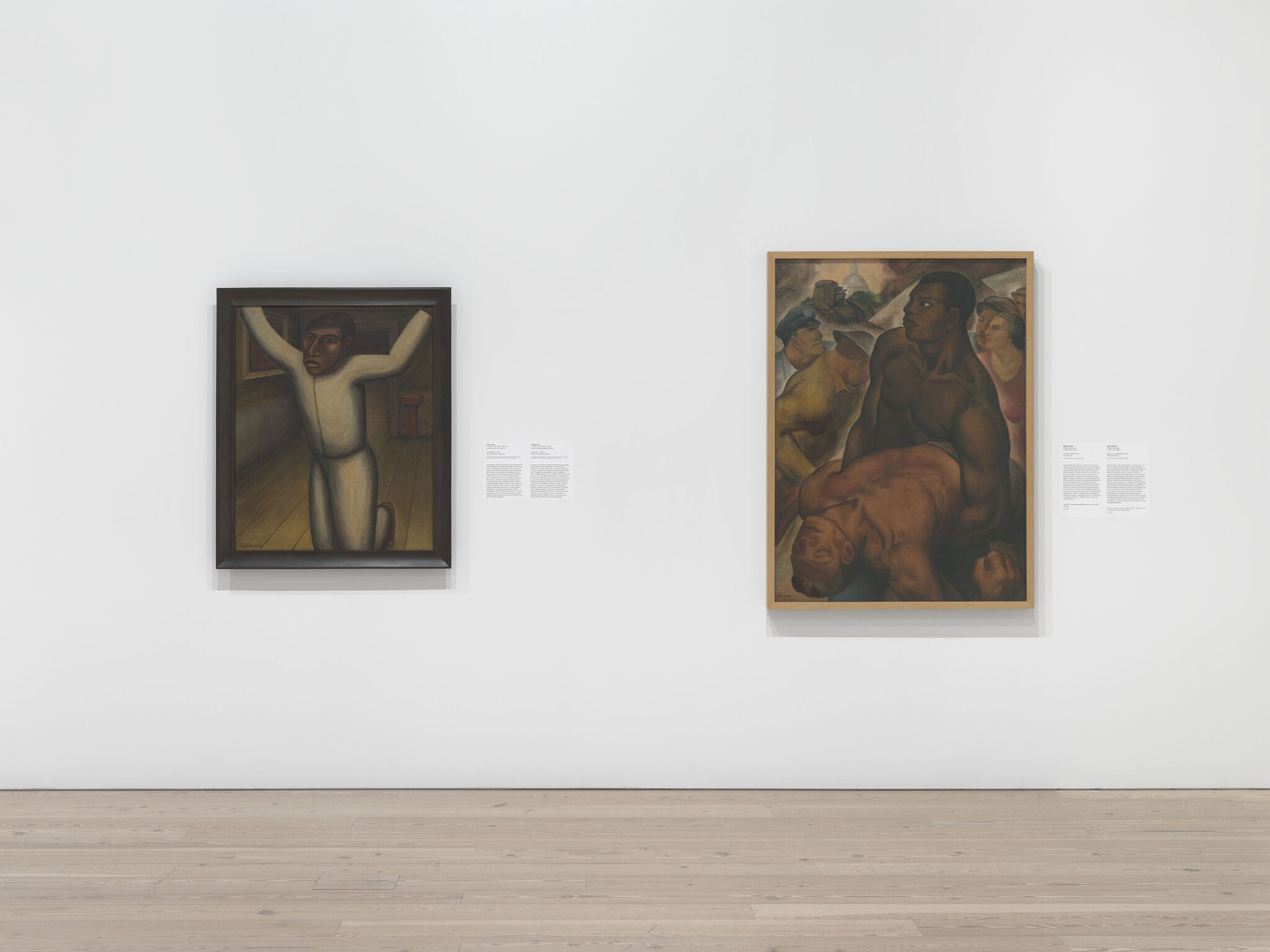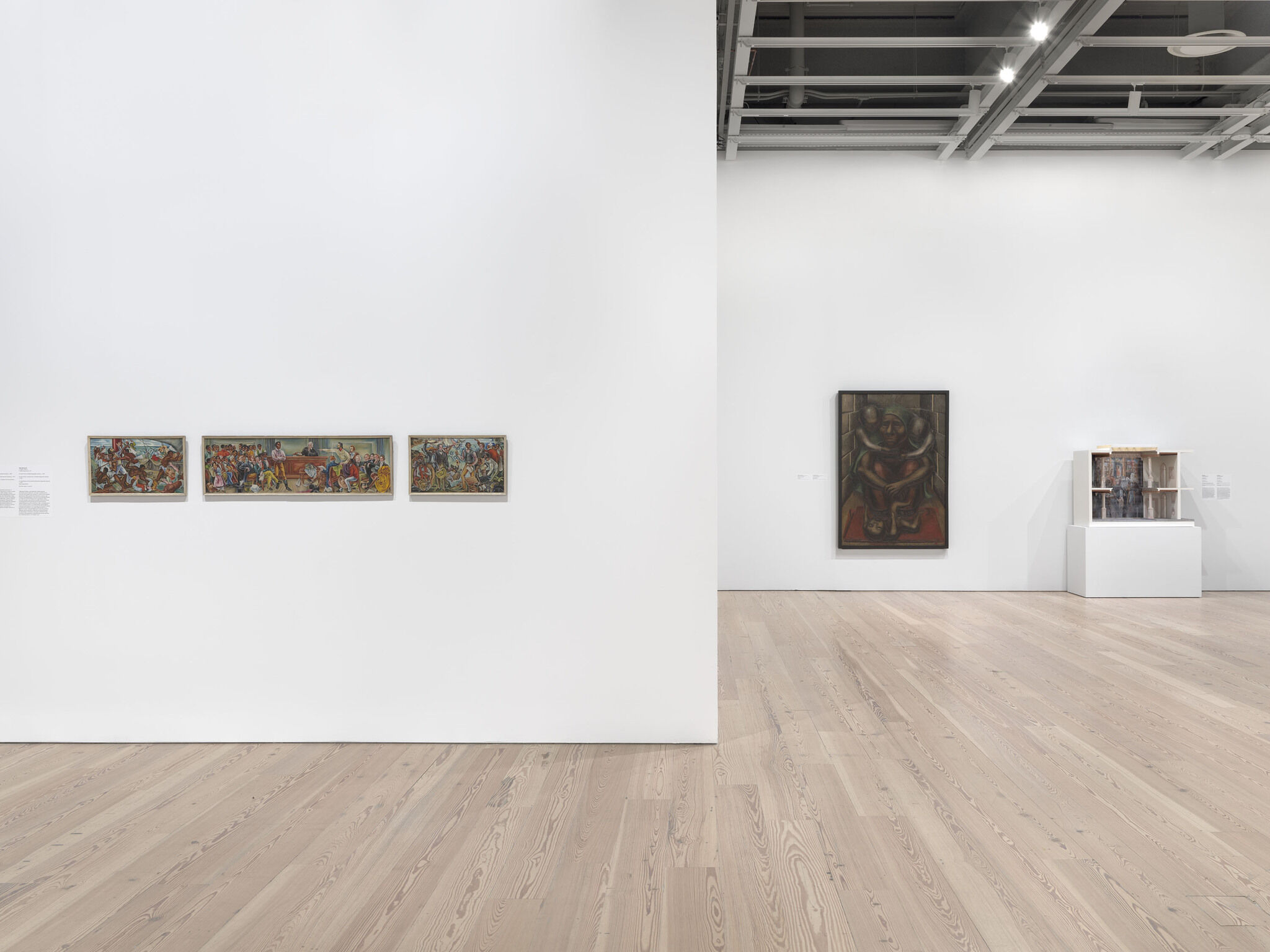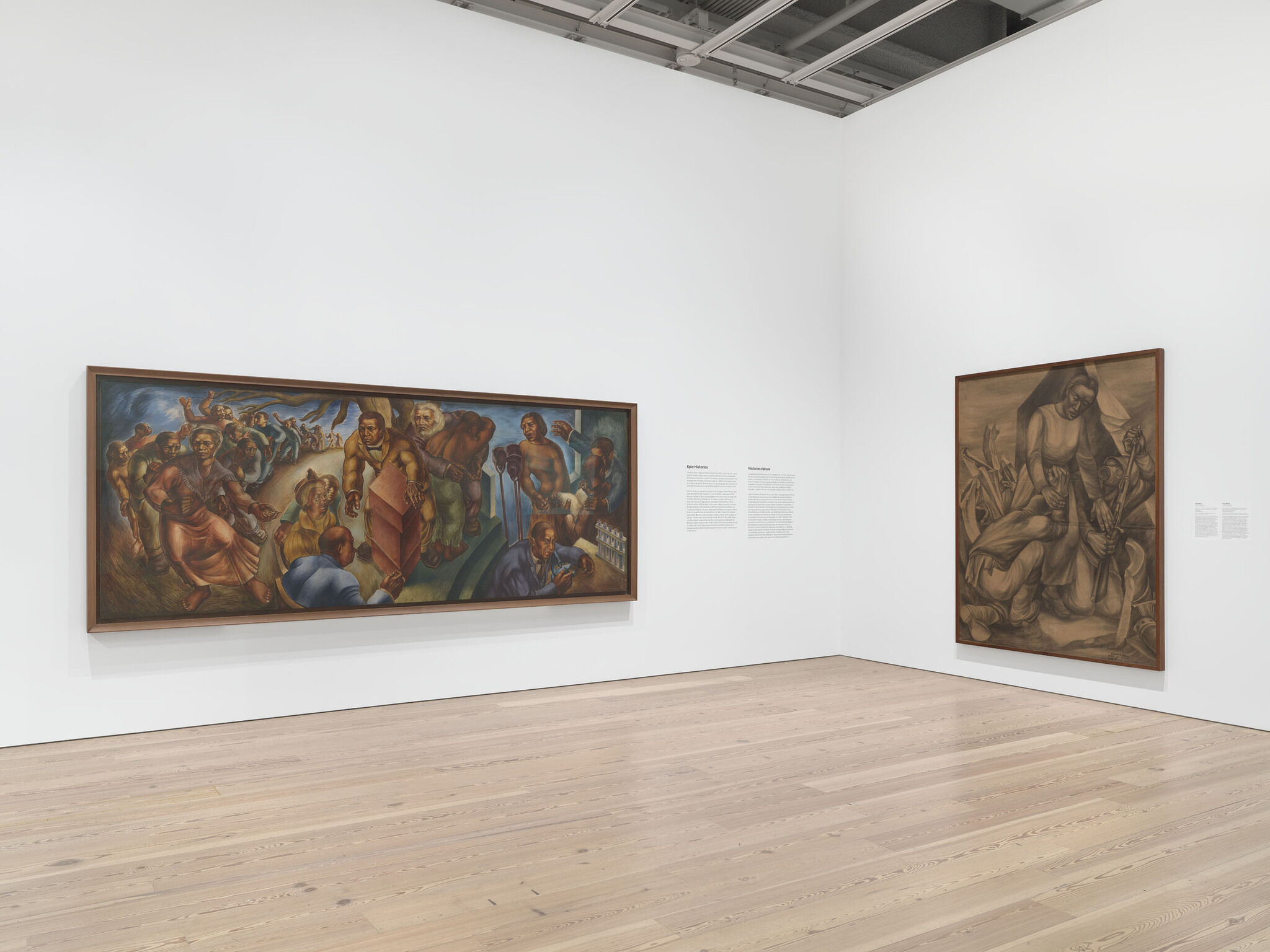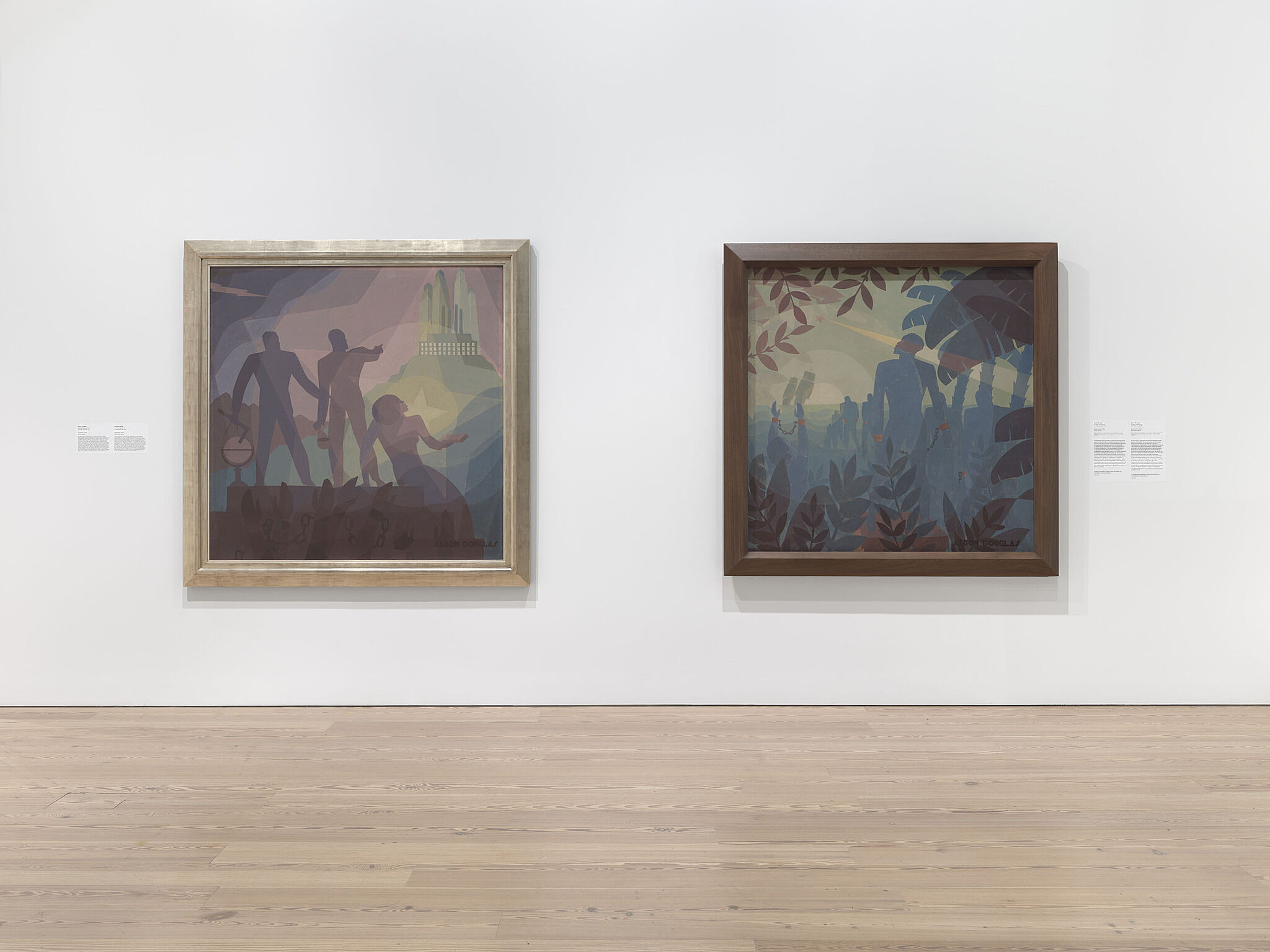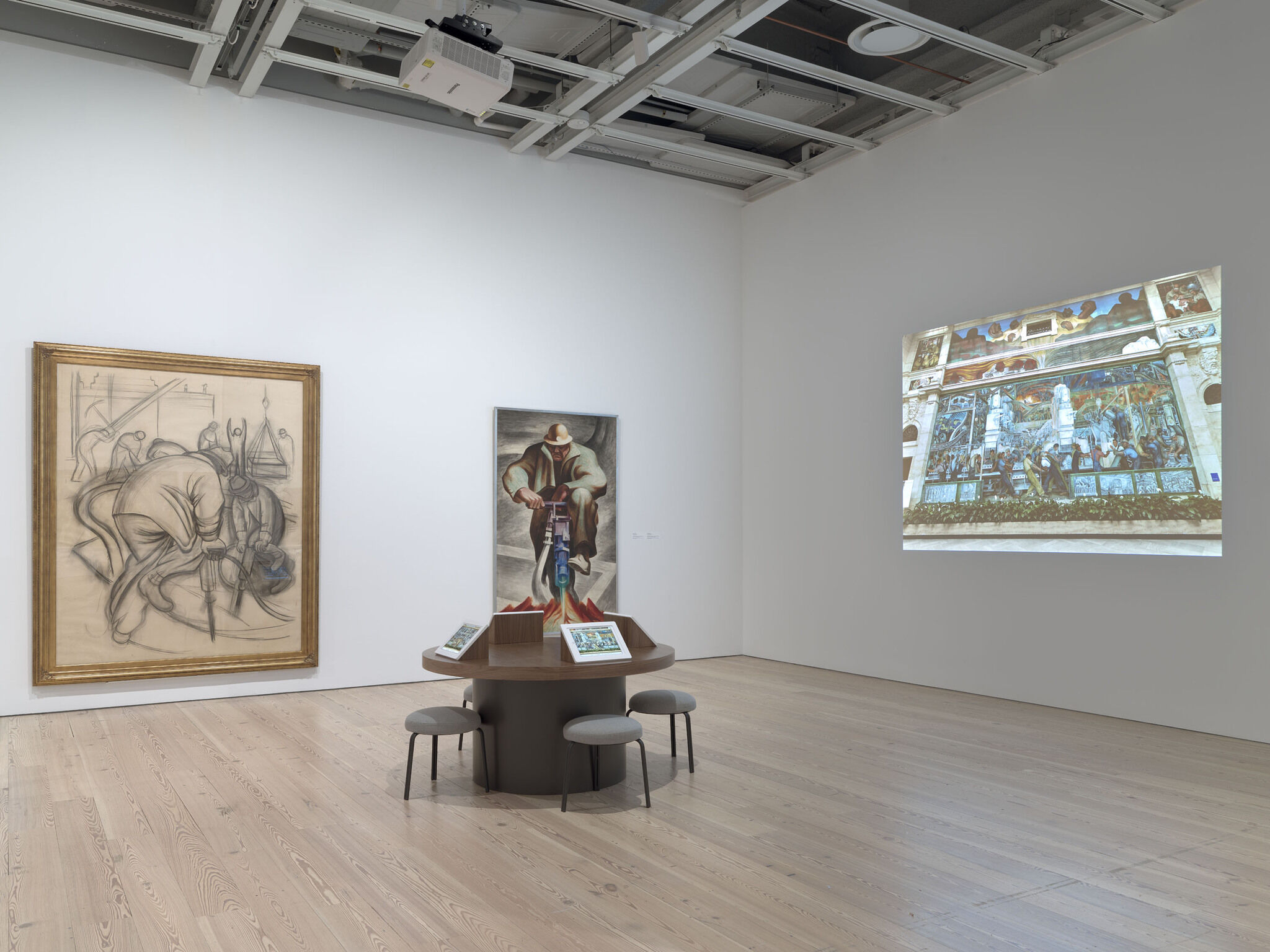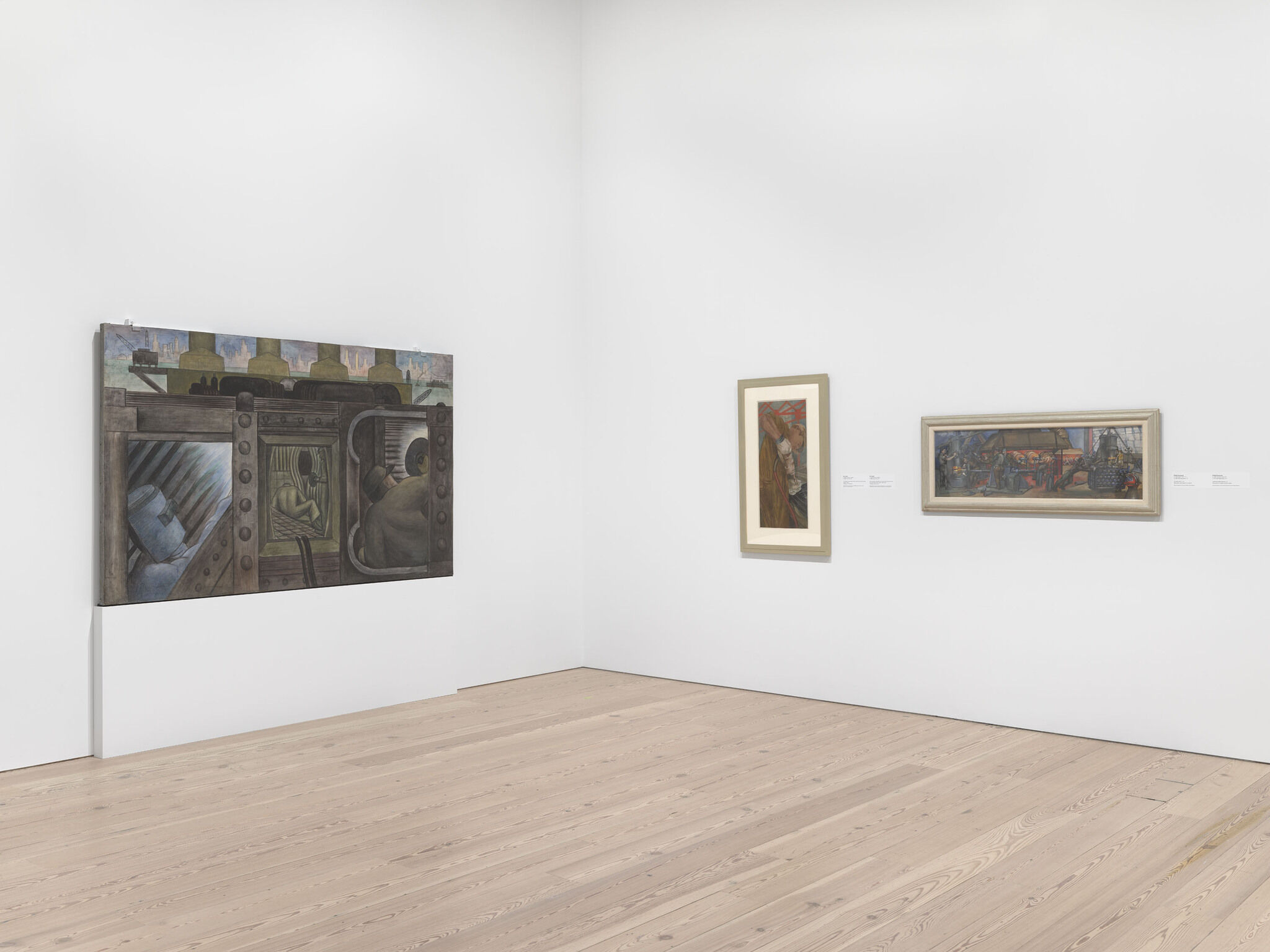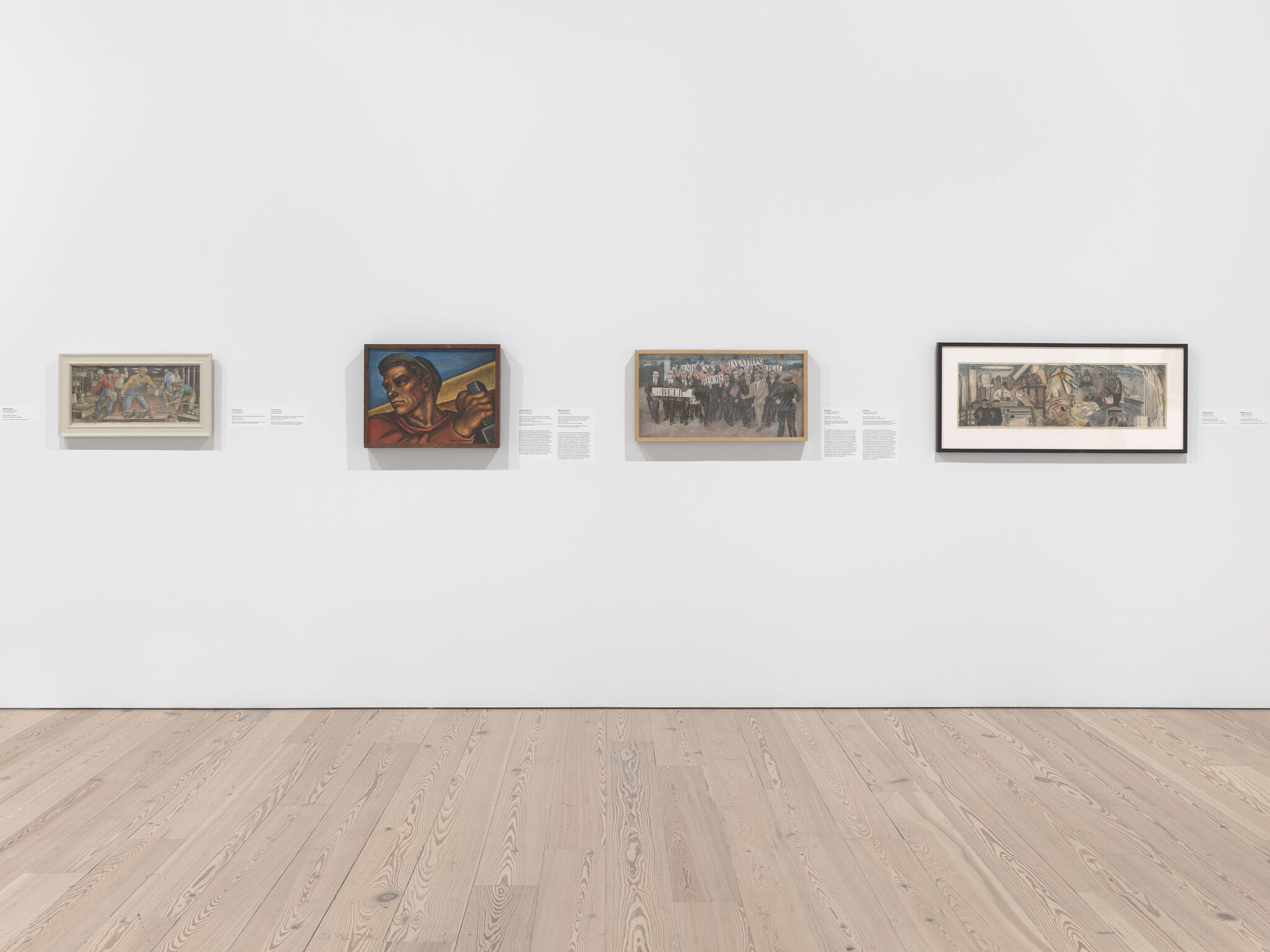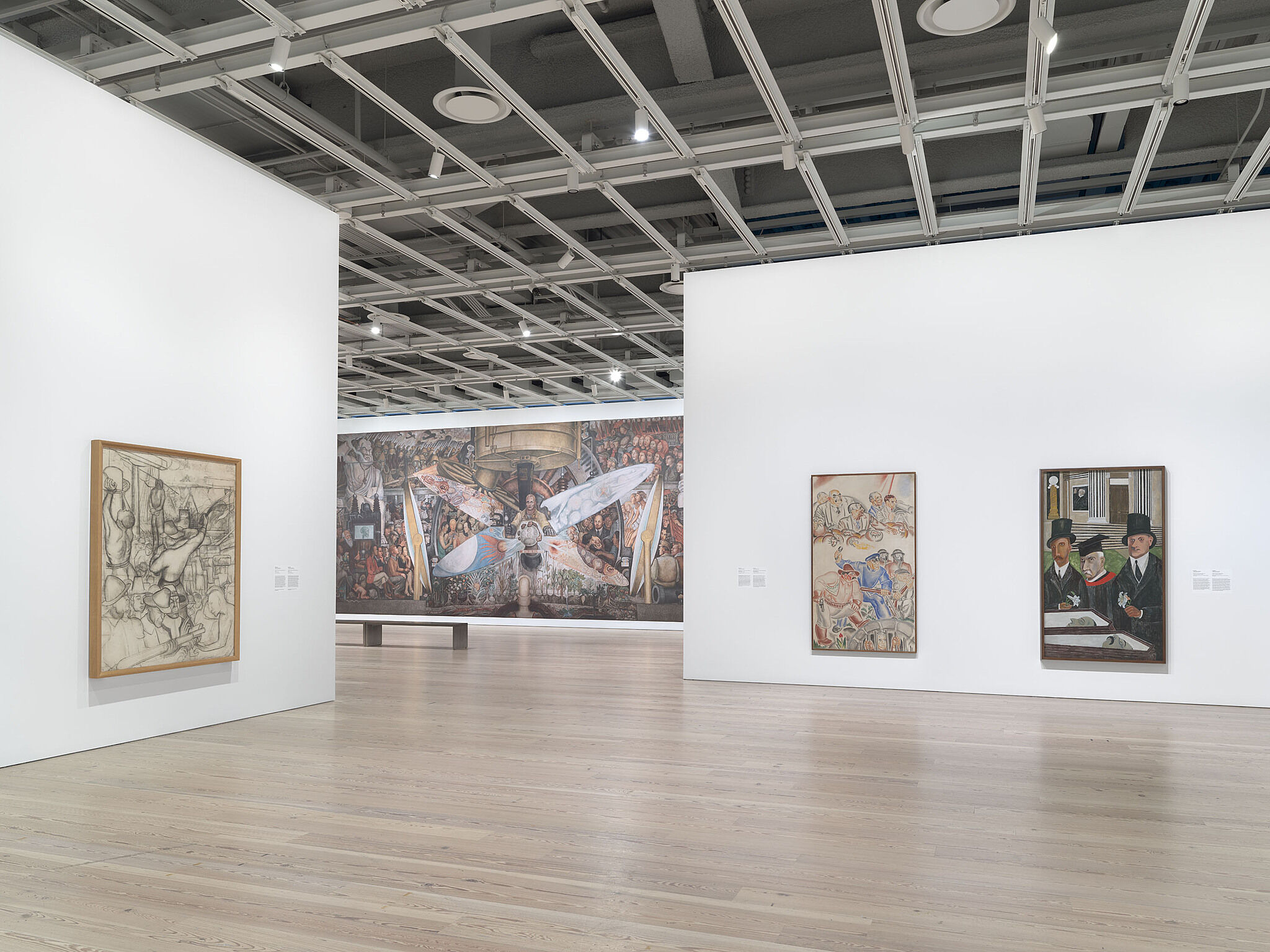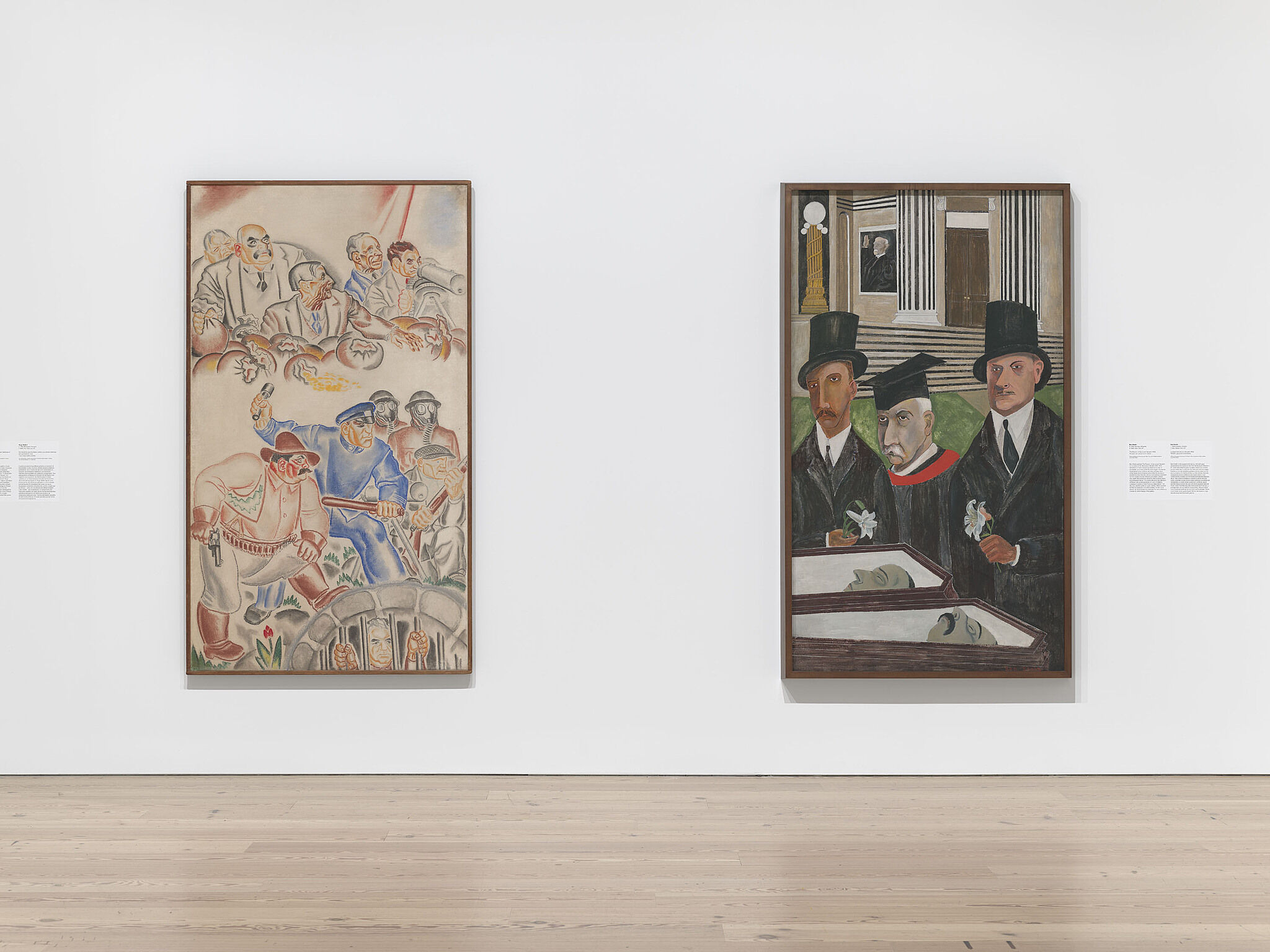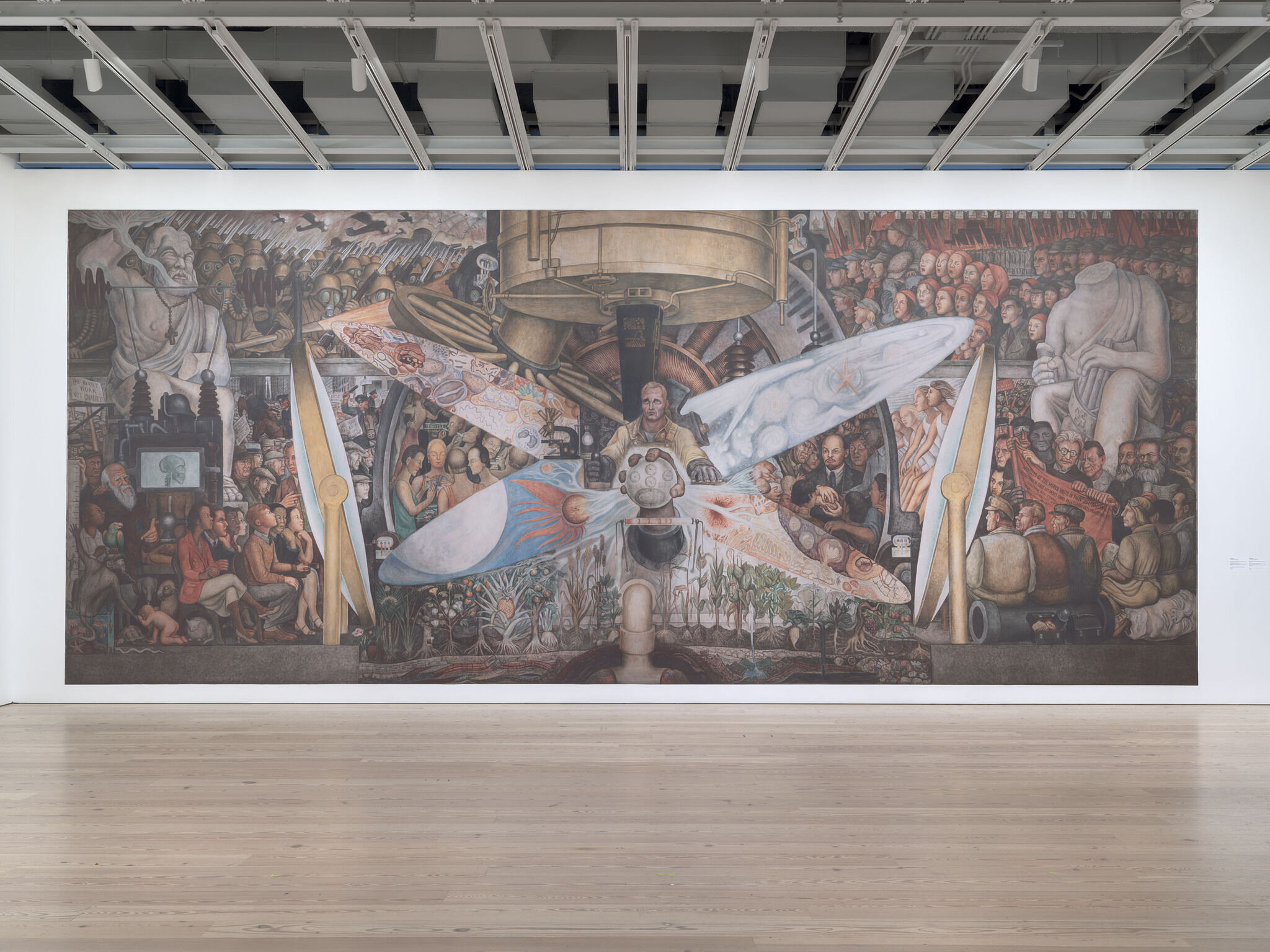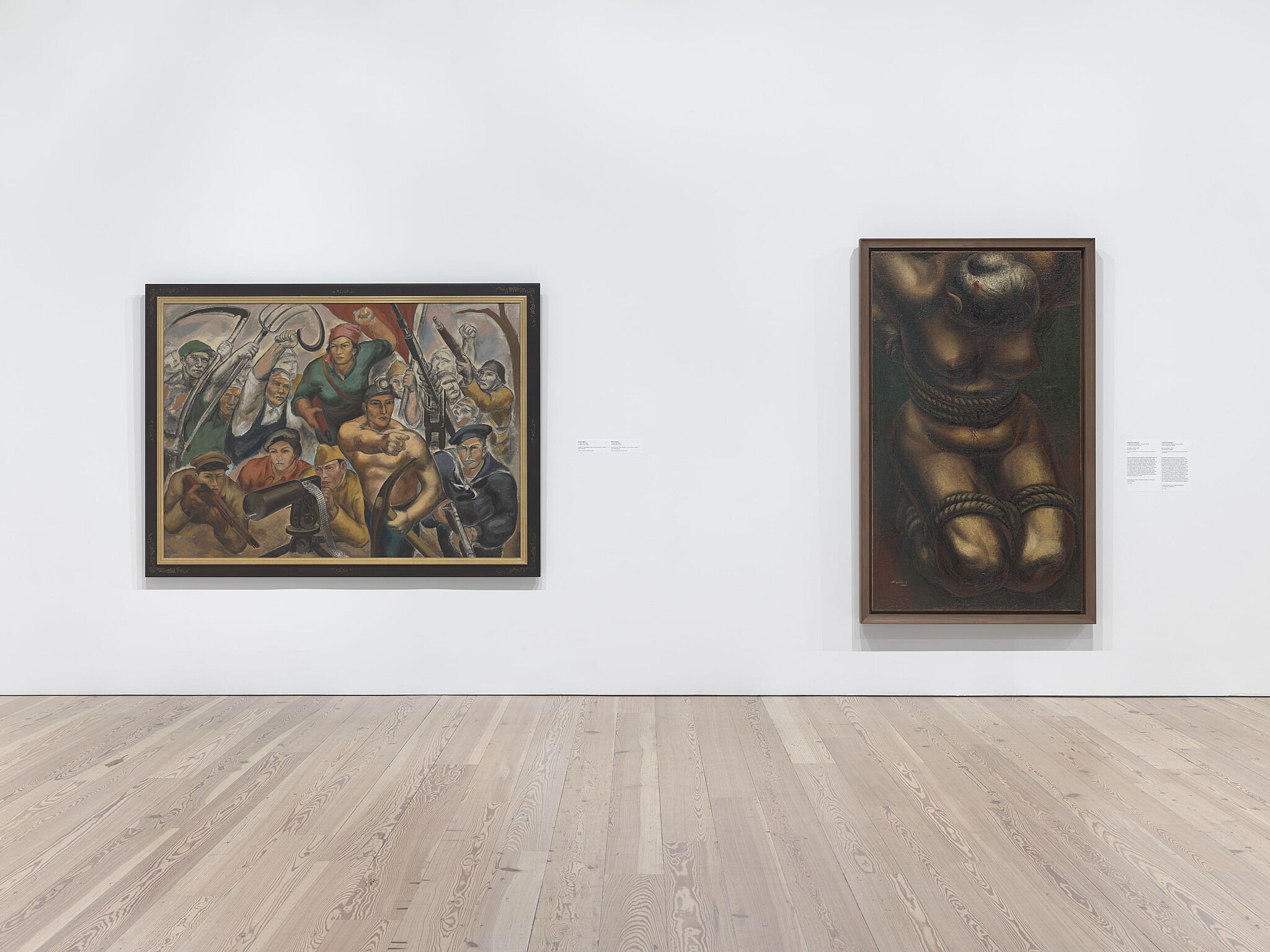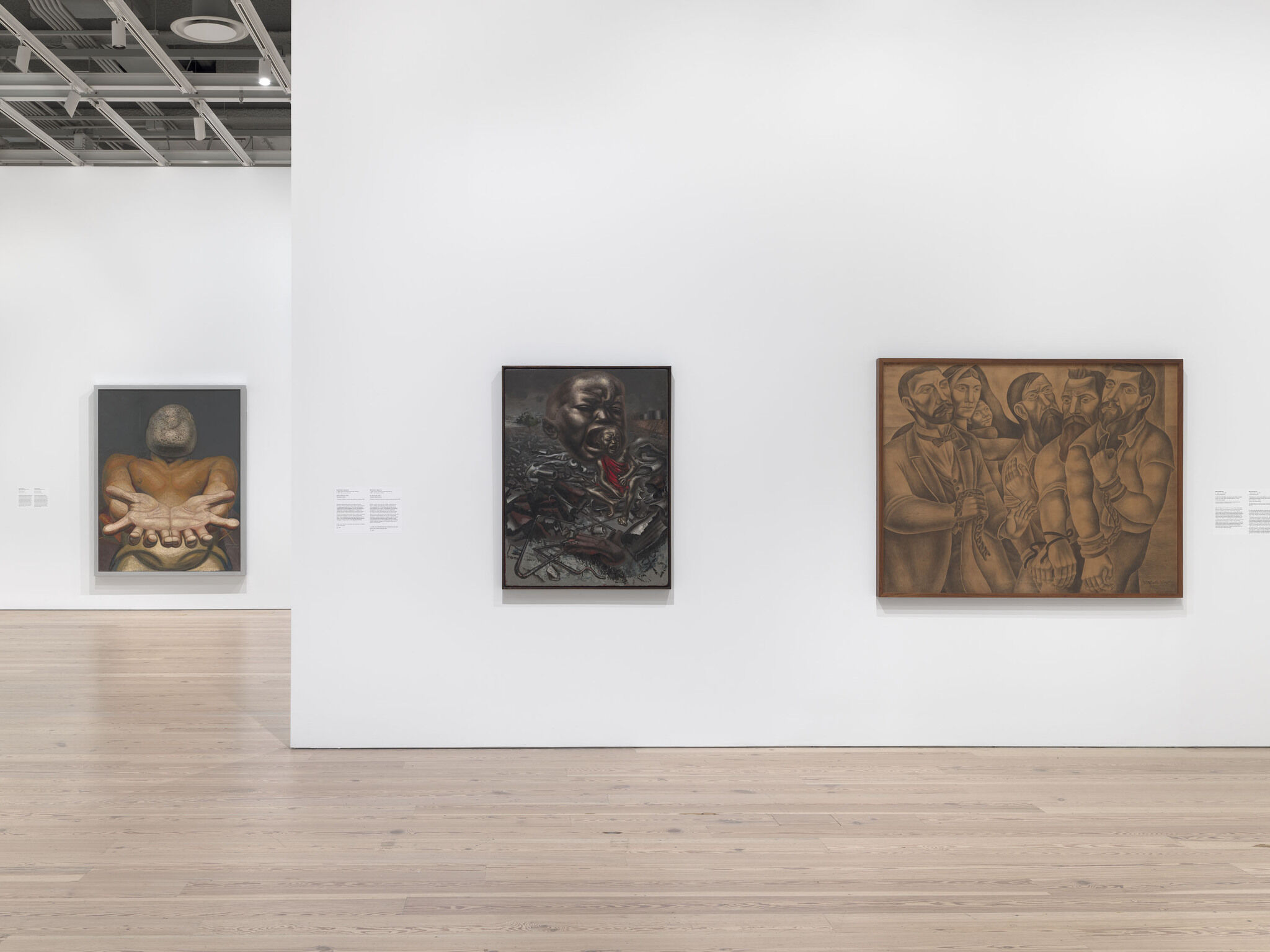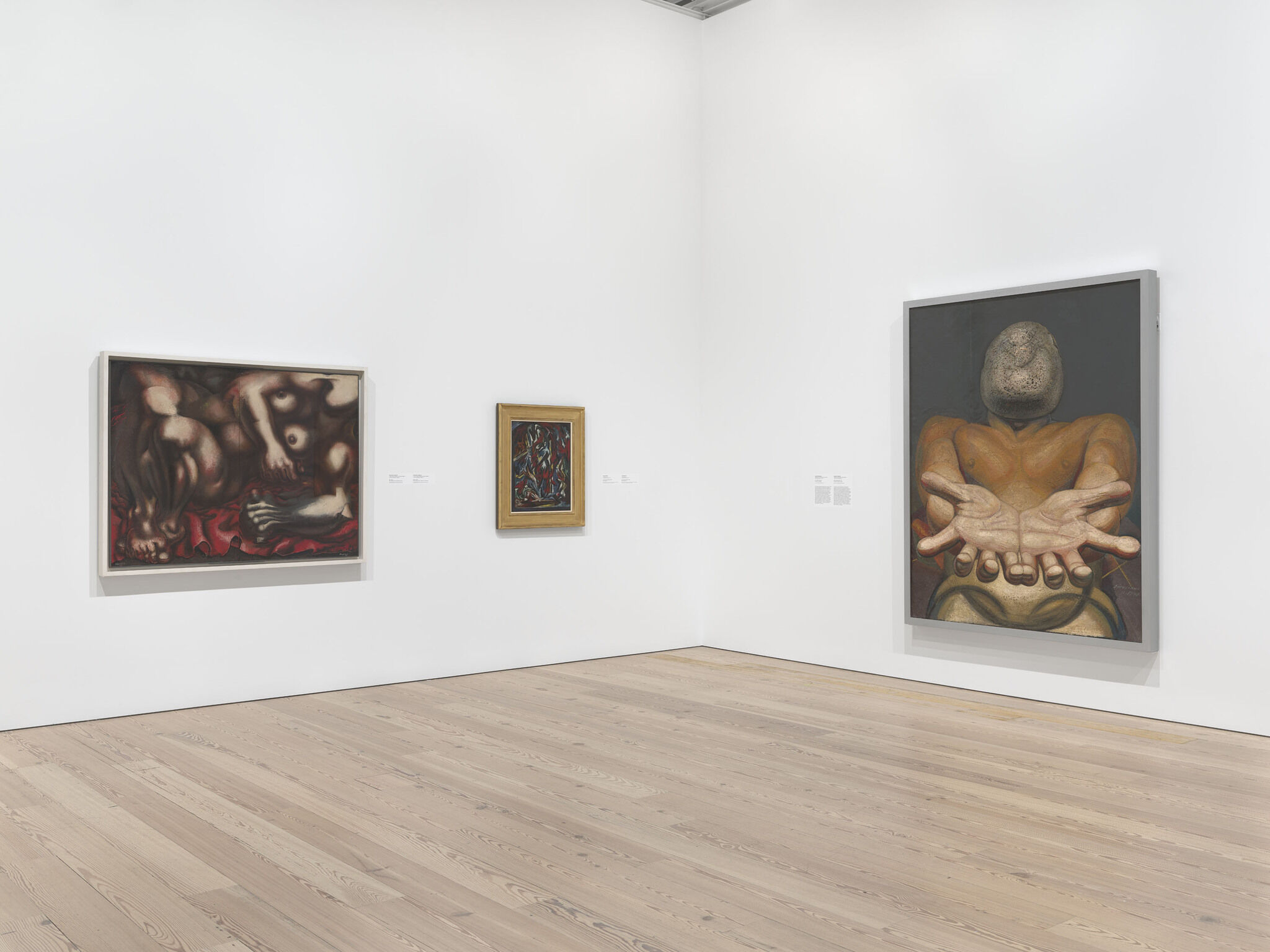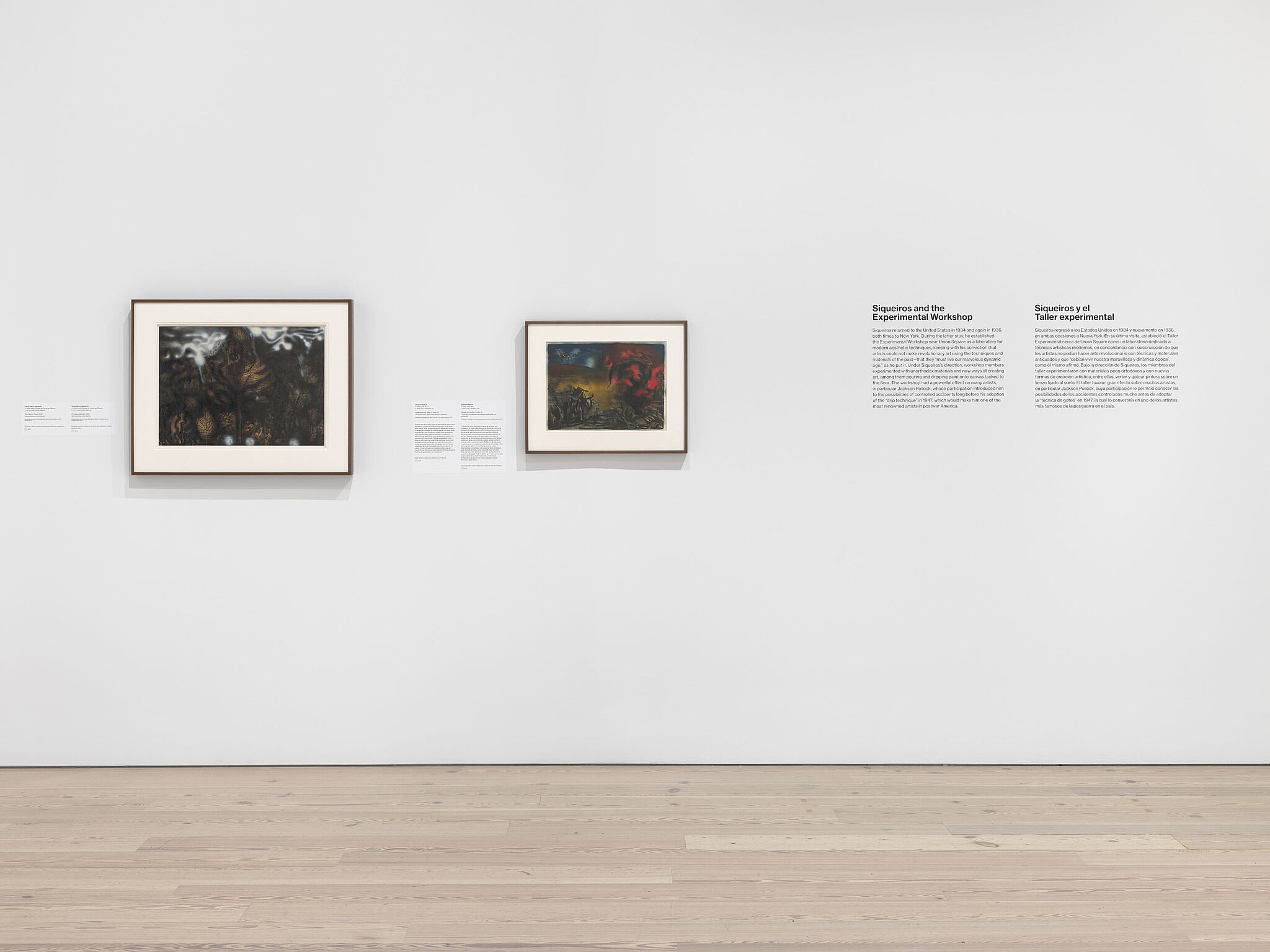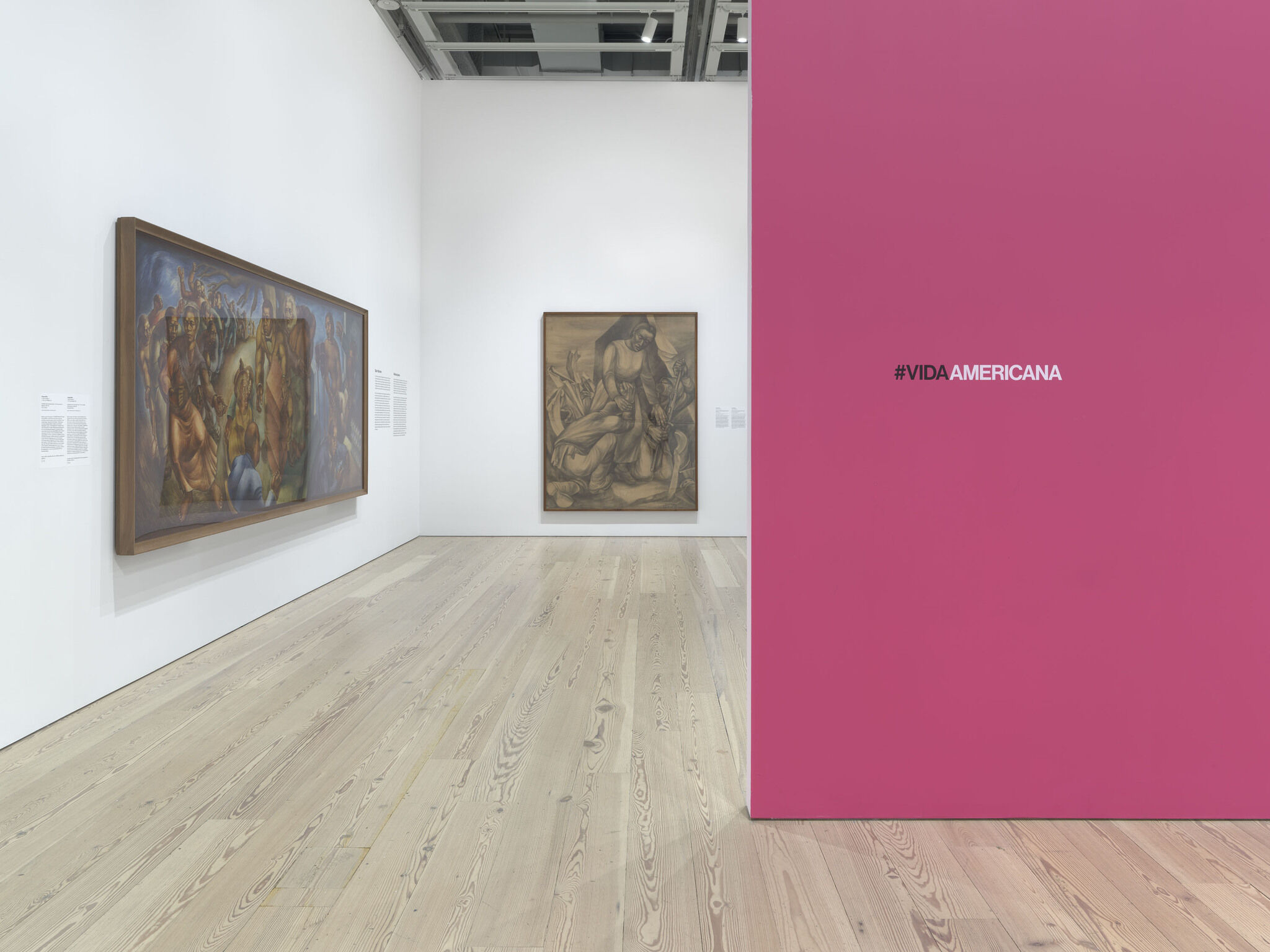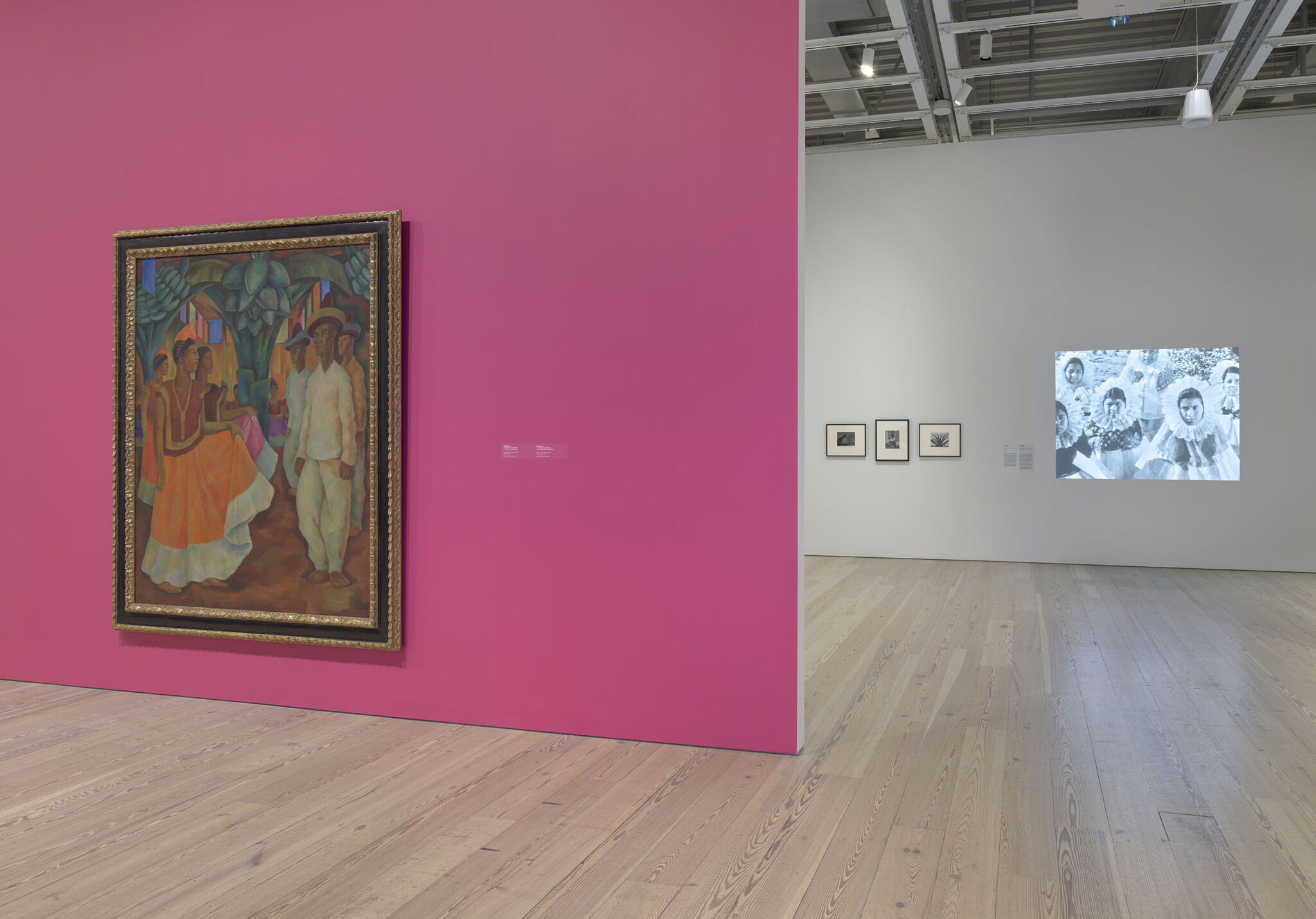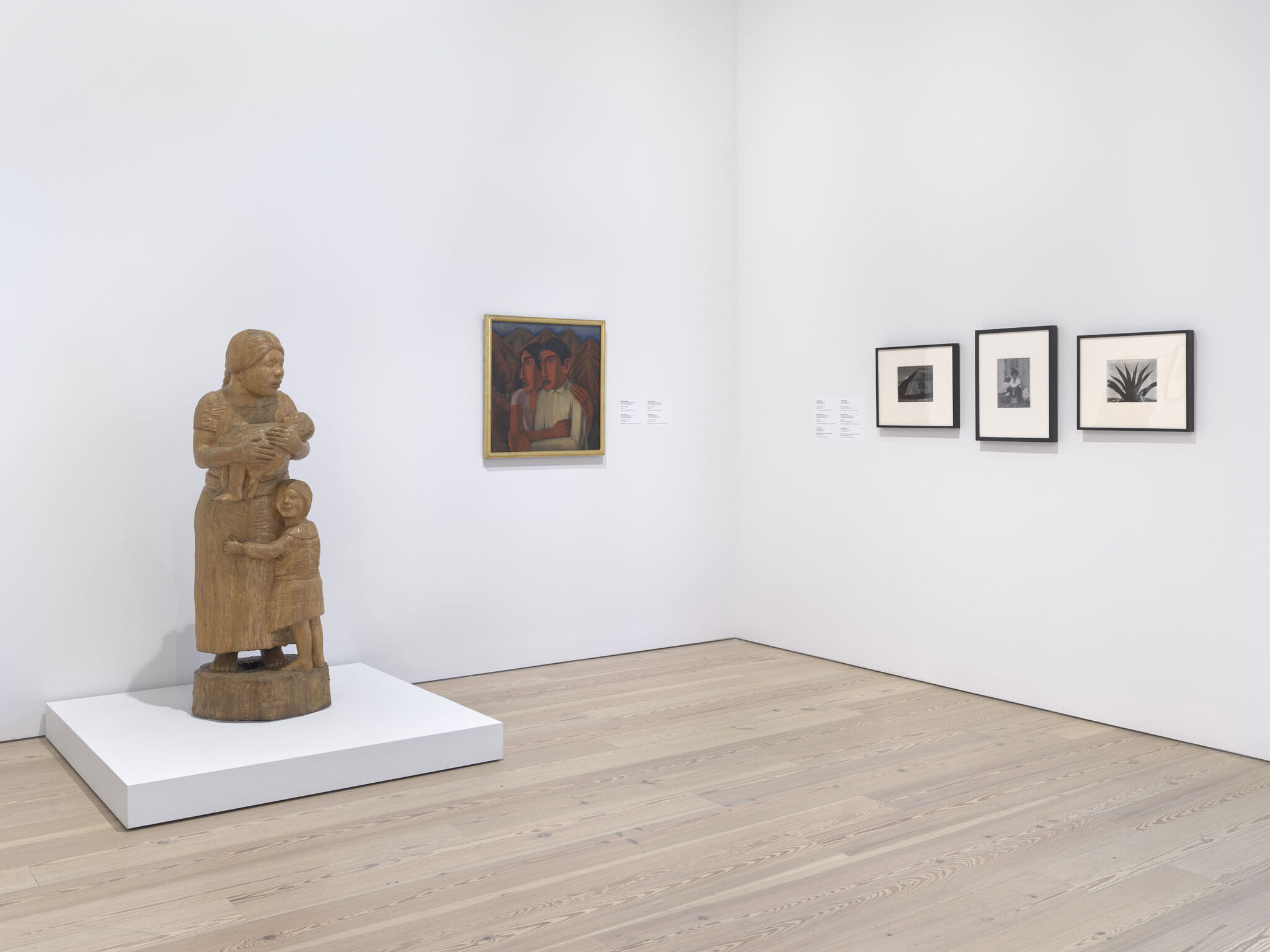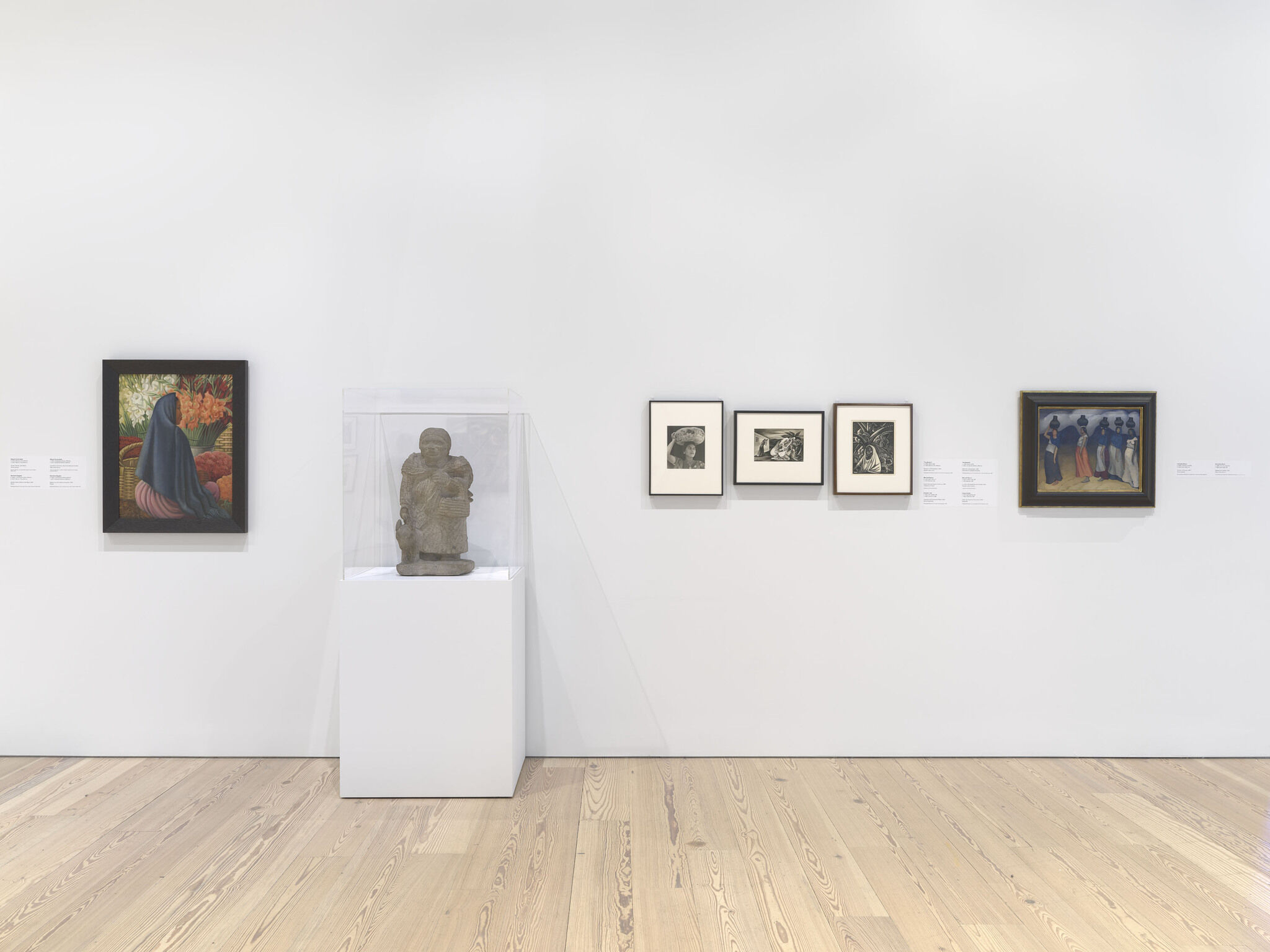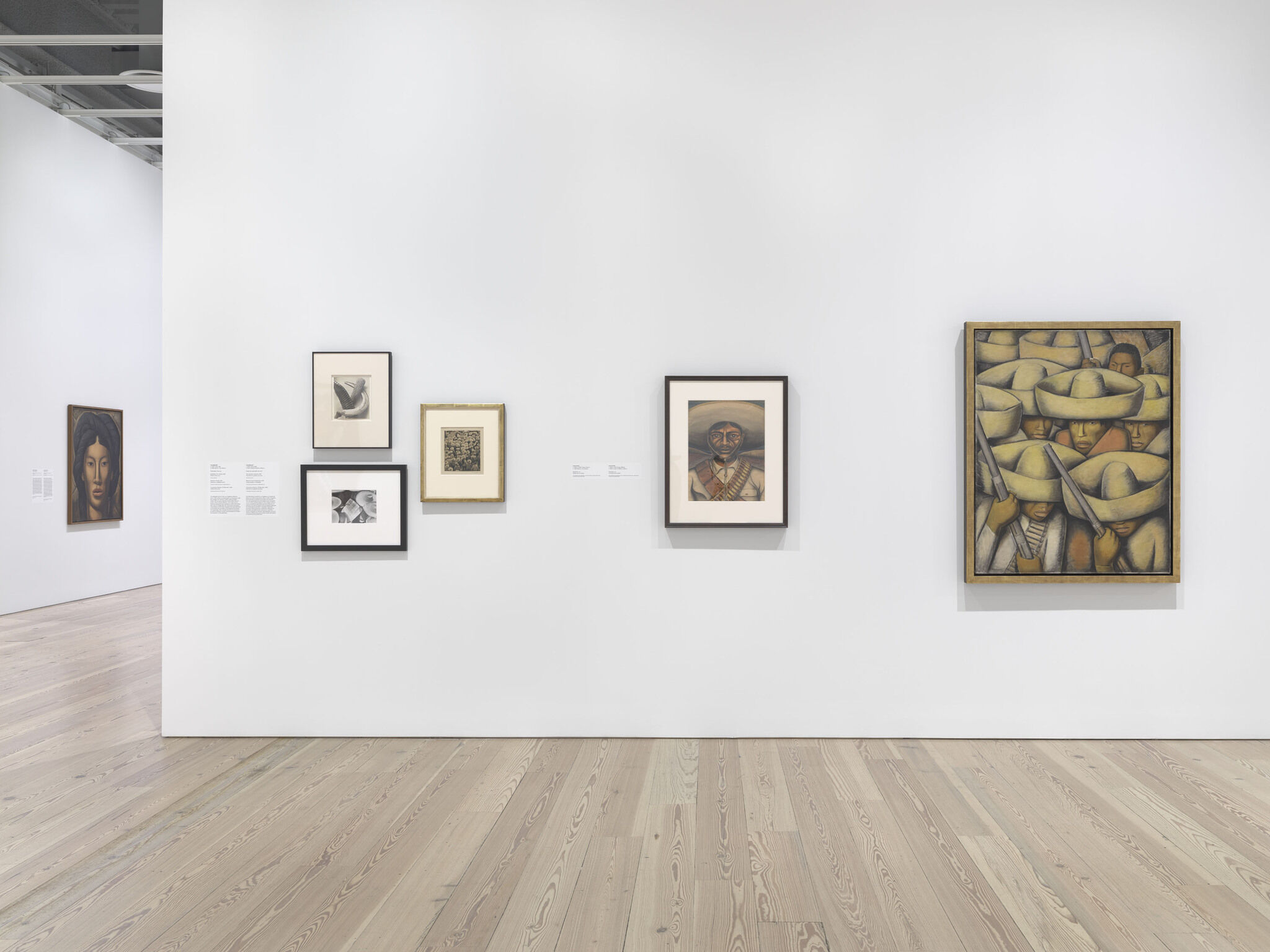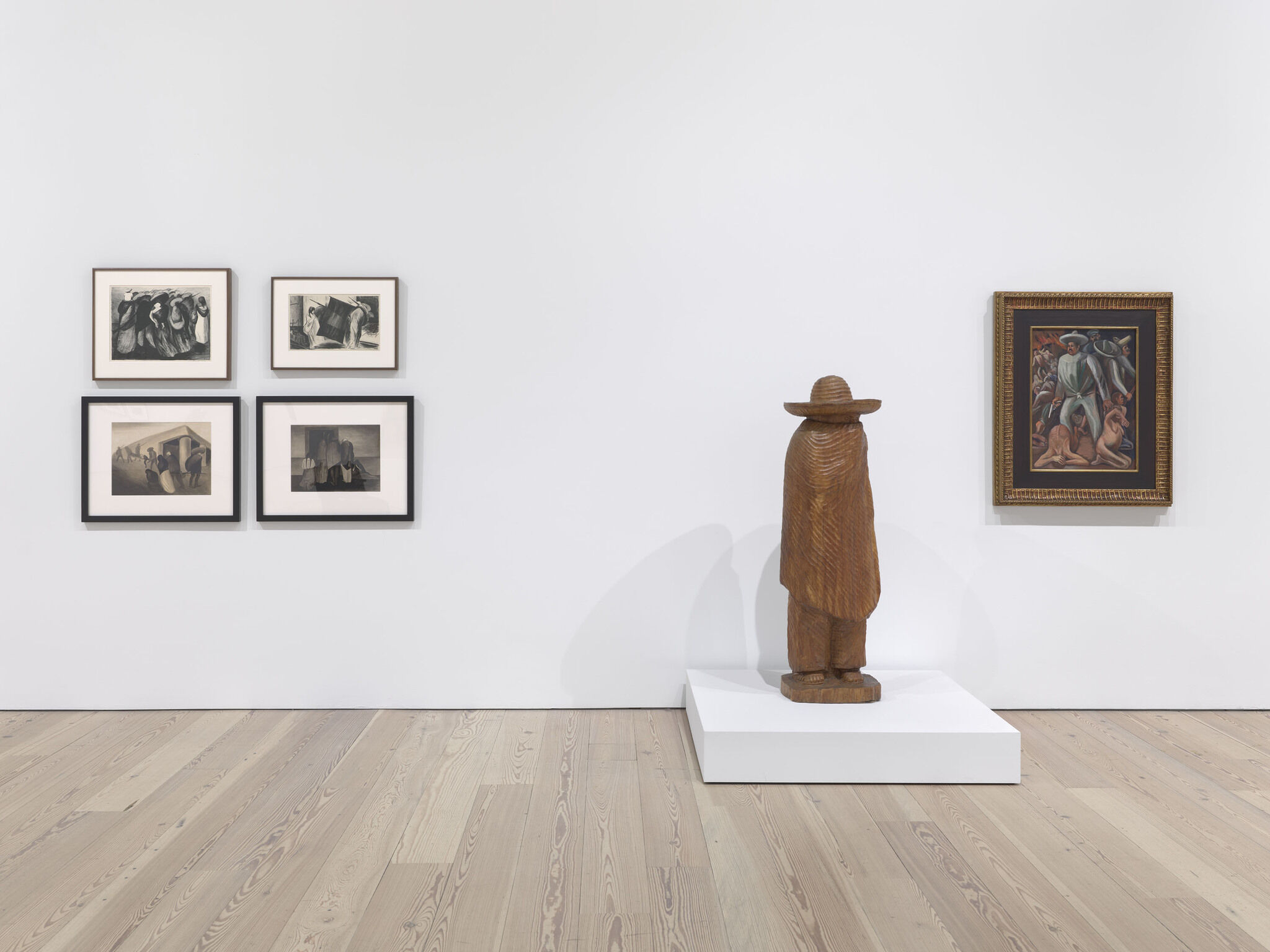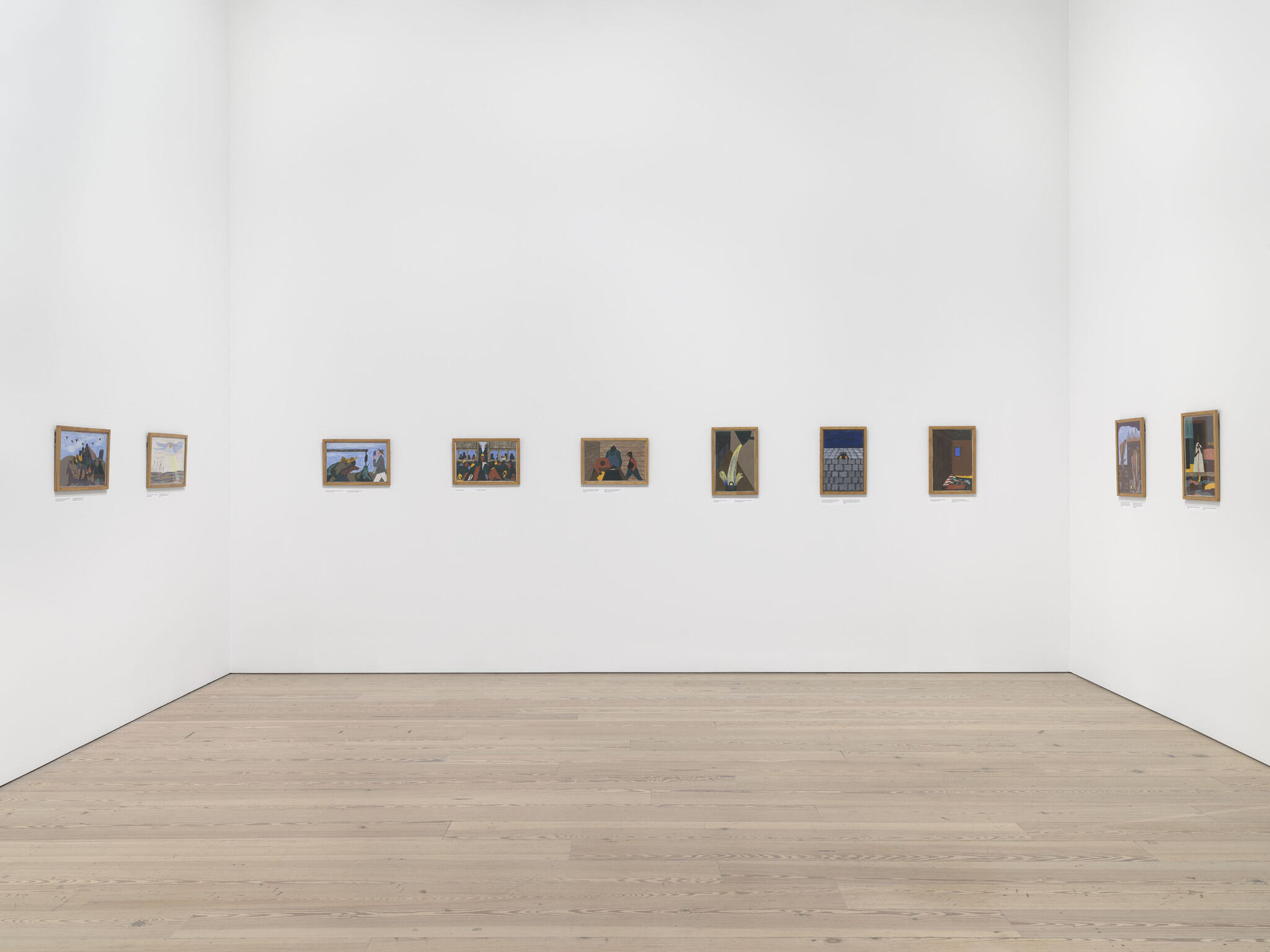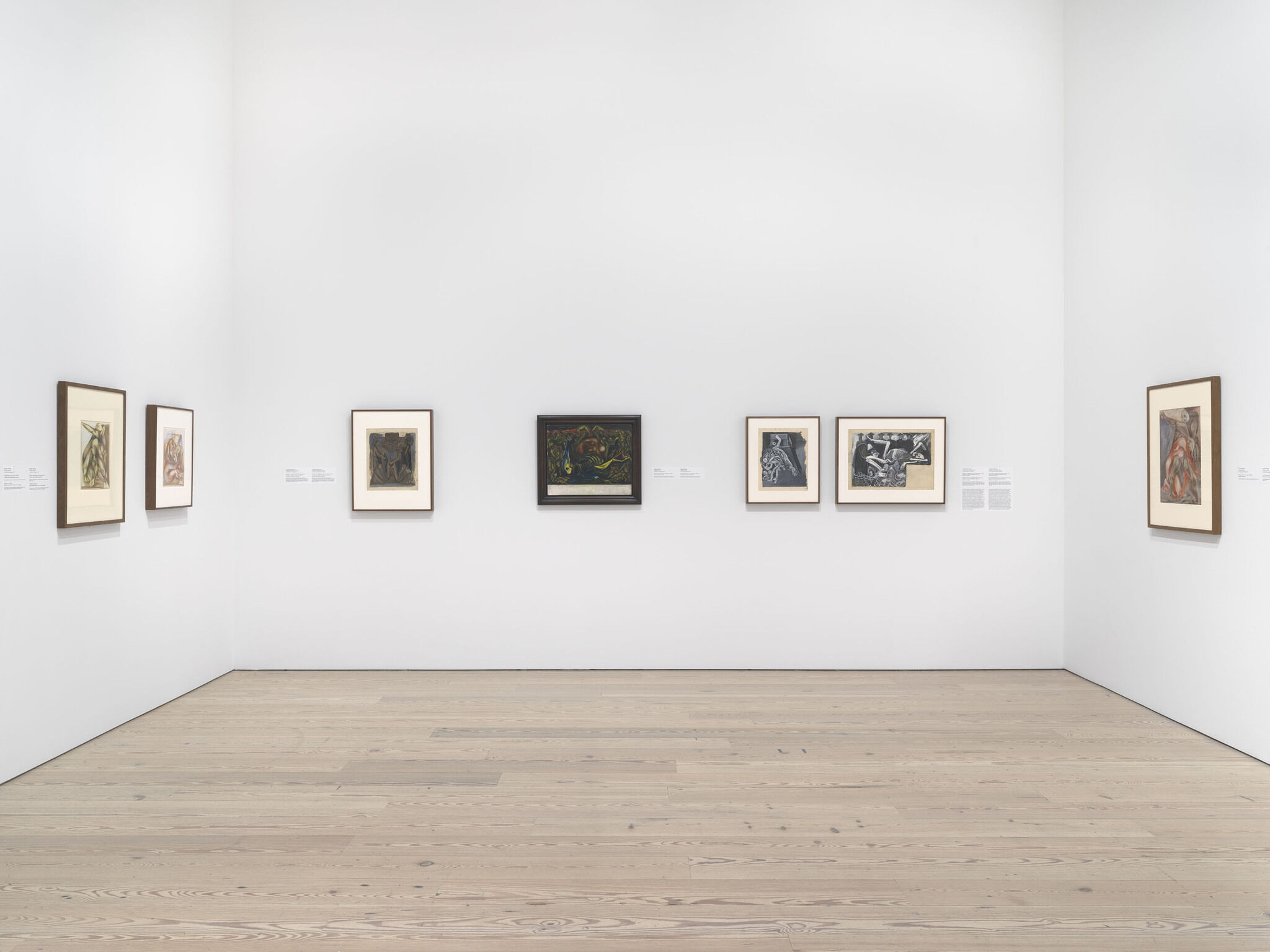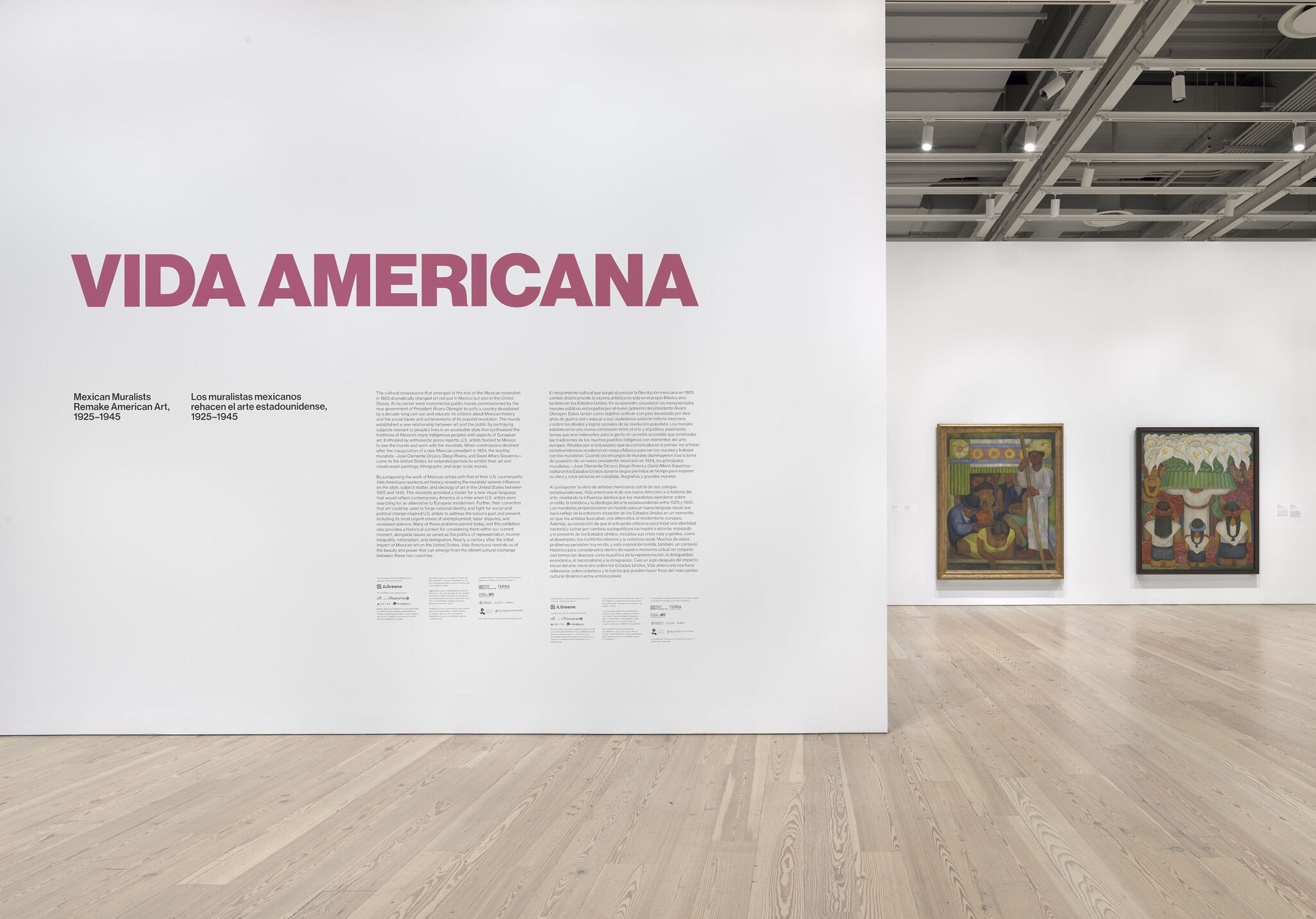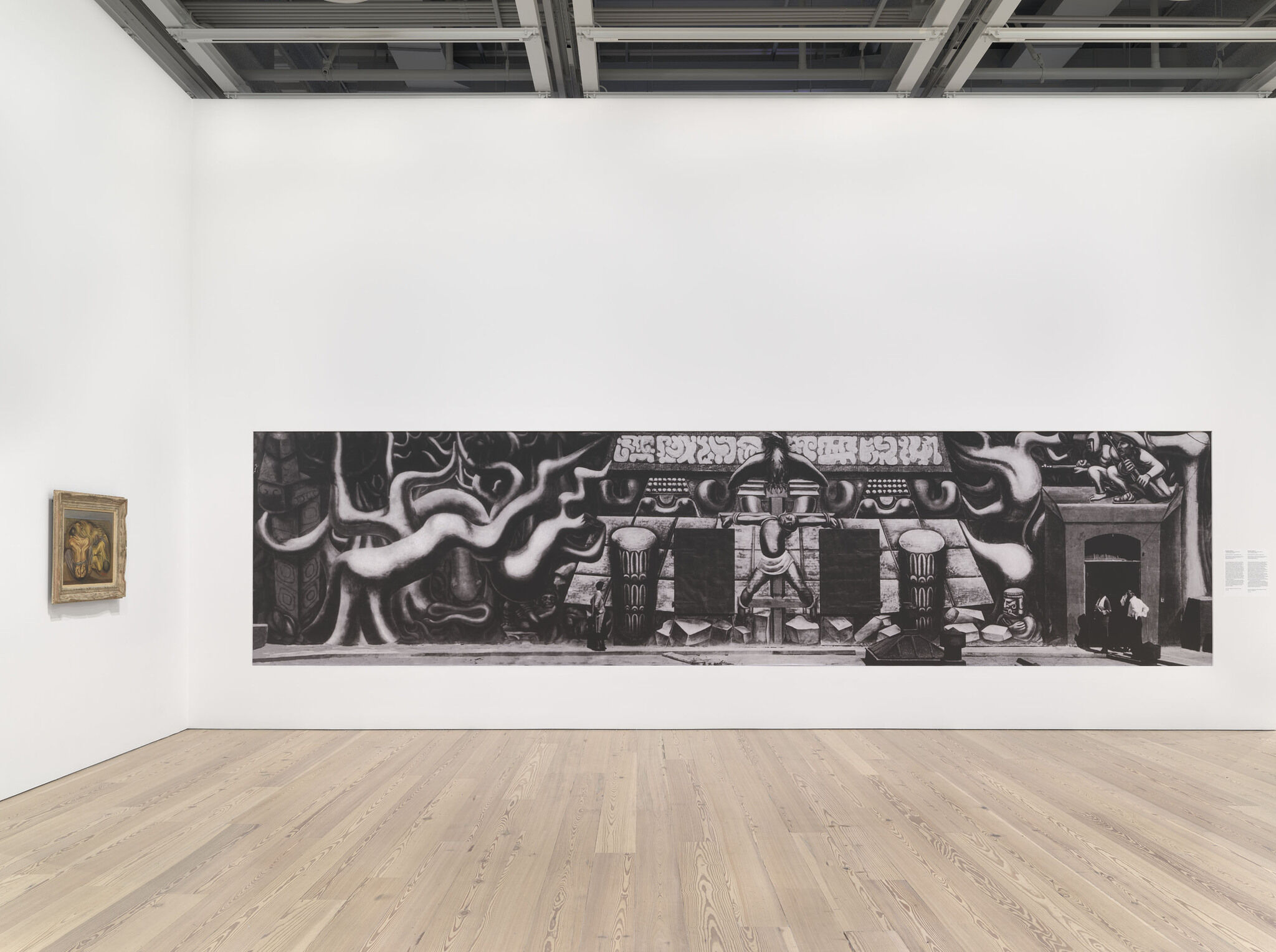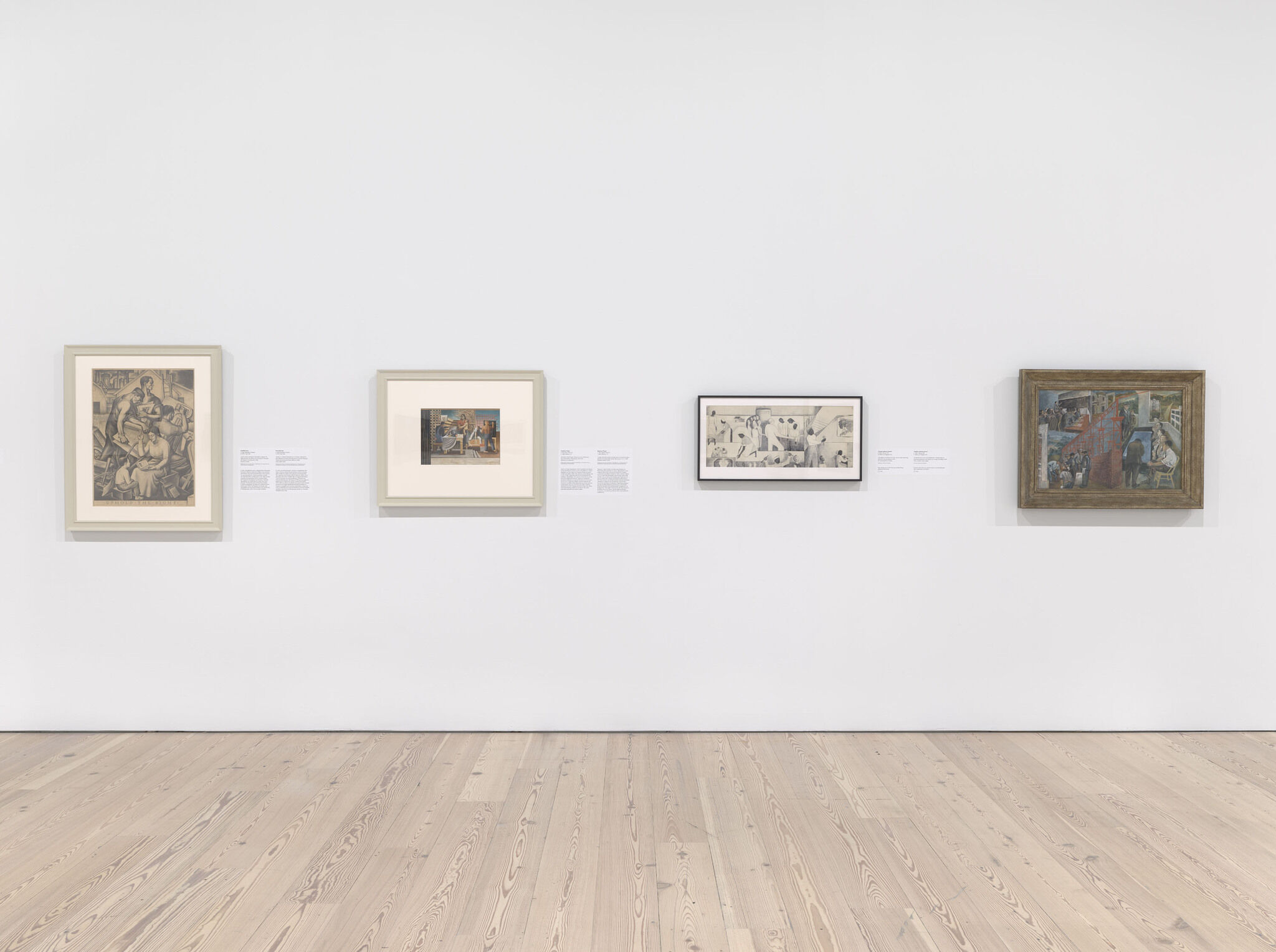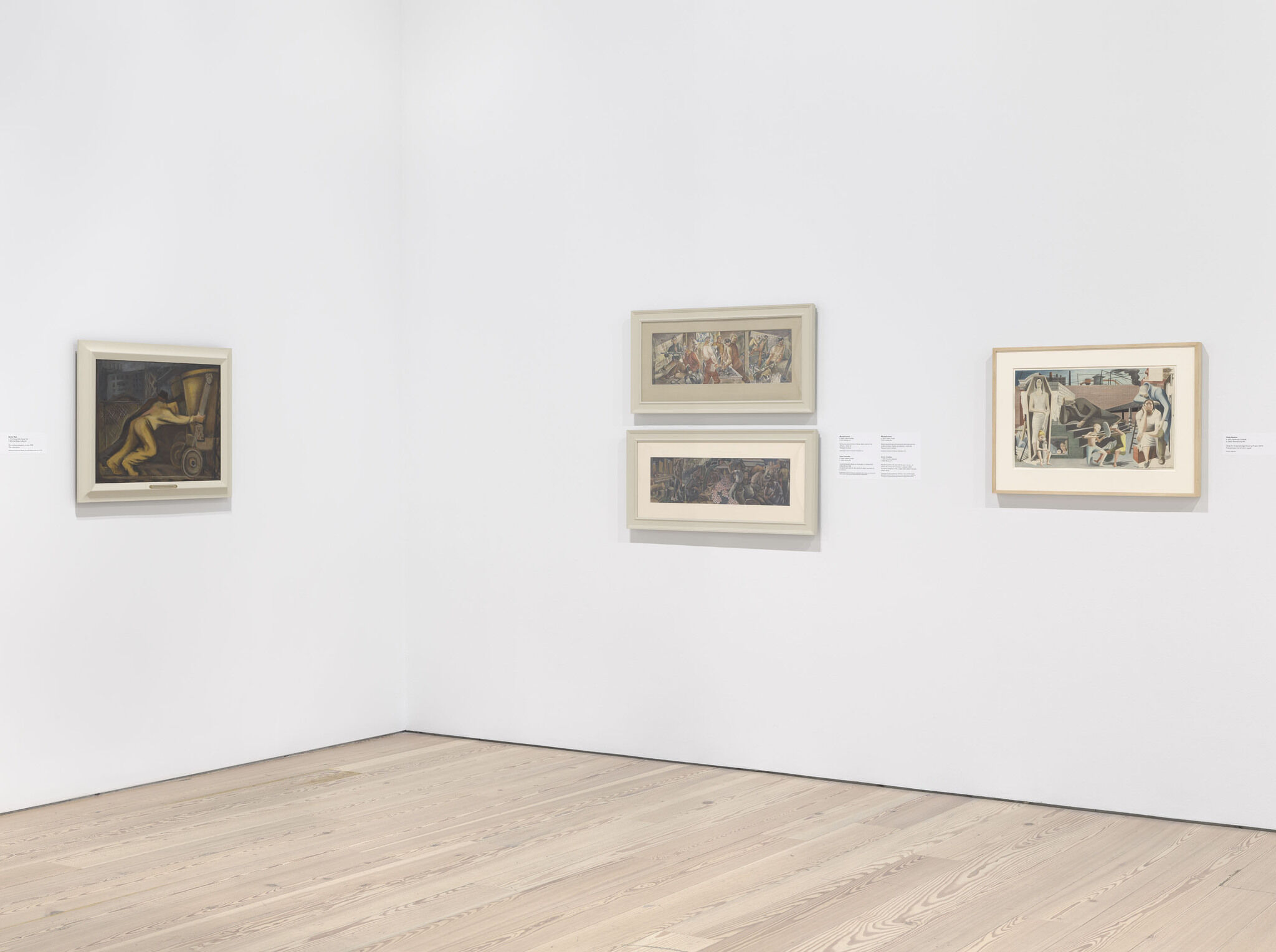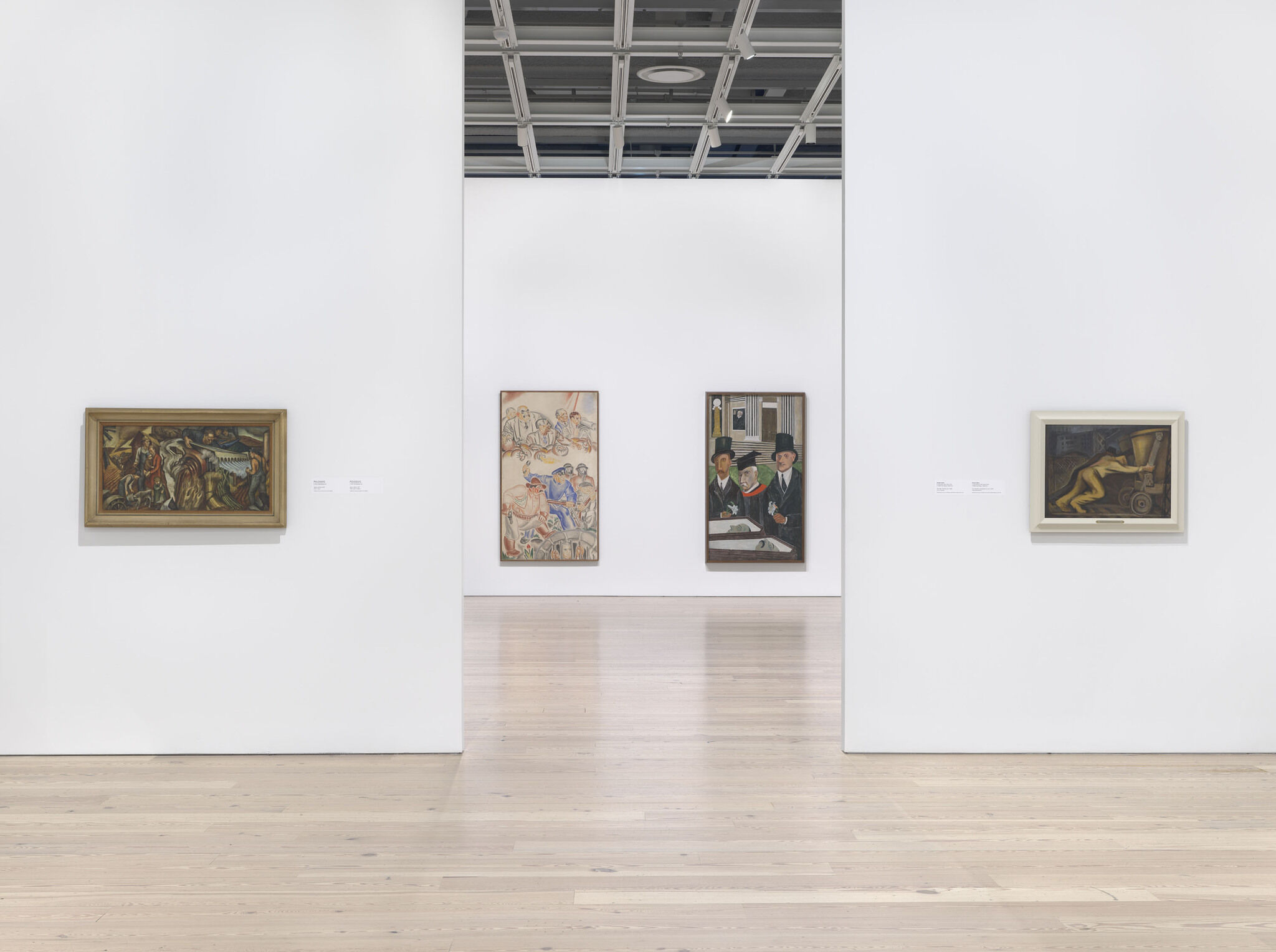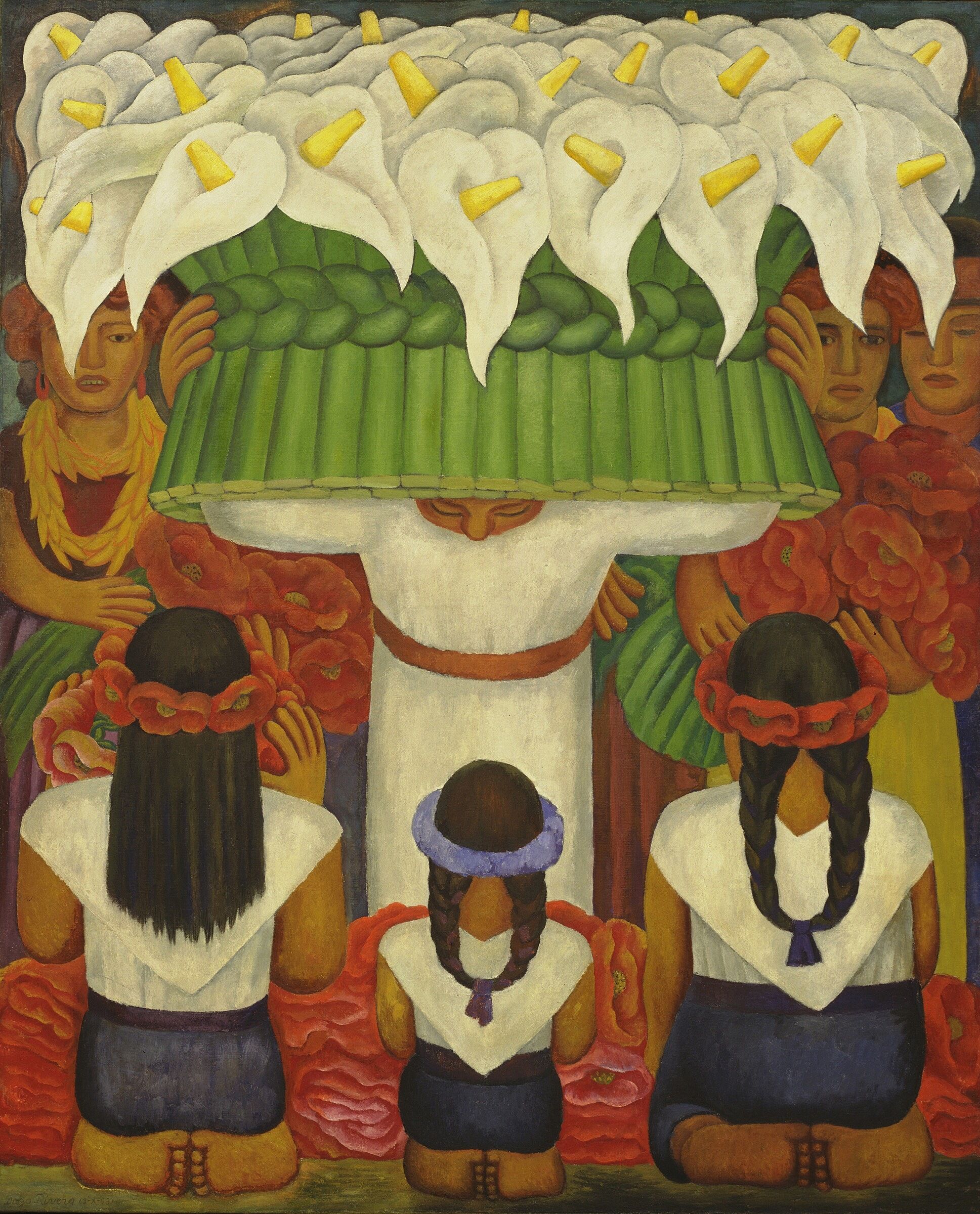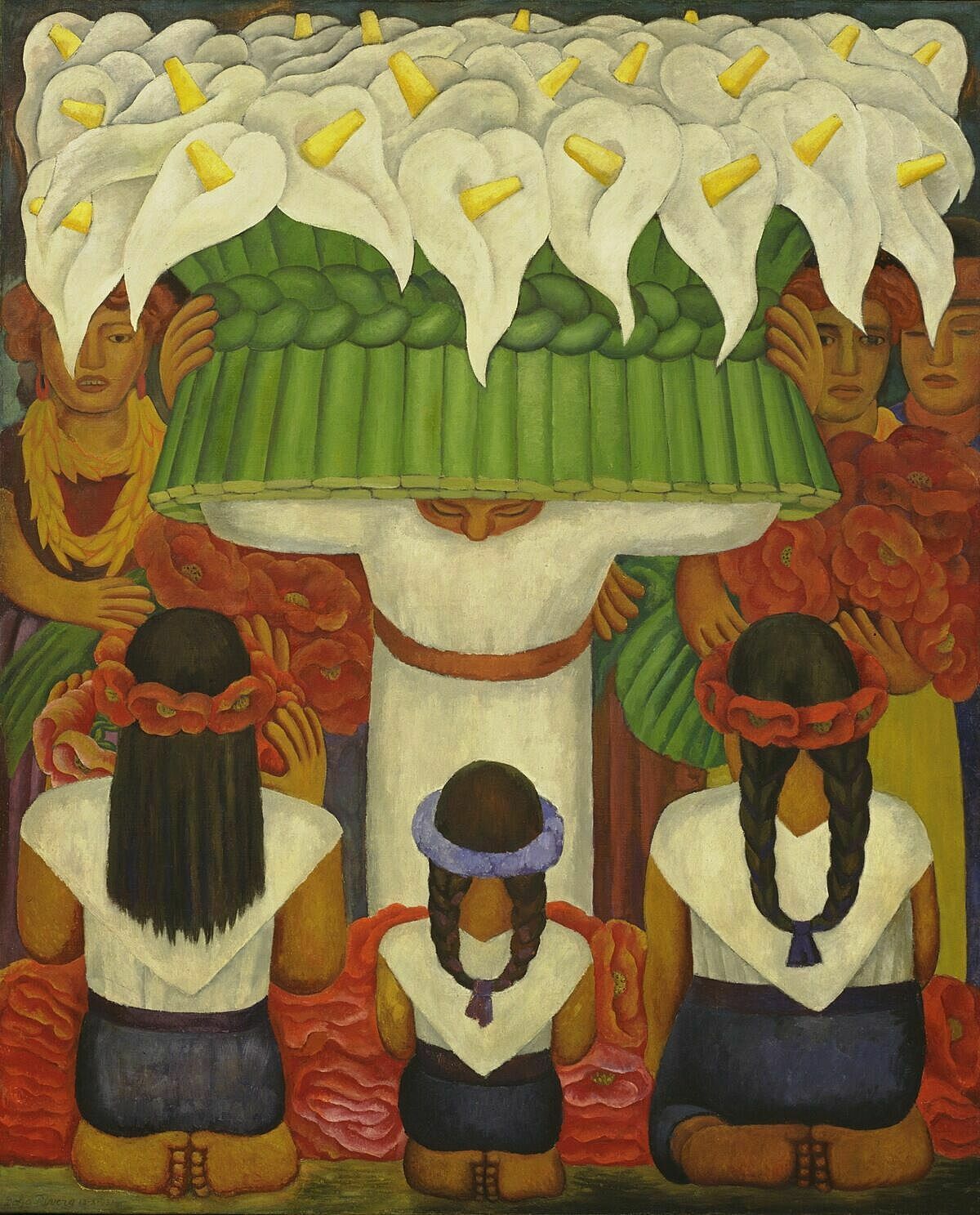Vida Americana: Mexican Muralists Remake American Art, 1925–1945
Feb 17, 2020–Jan 31, 2021
Mexico underwent a radical cultural transformation at the end of its Revolution in 1920. A new relationship between art and the public was established, giving rise to art that spoke directly to the people about social justice and national life. The model galvanized artists in the United States who were seeking to break free of European aesthetic domination to create publicly significant and accessible native art. Numerous American artists traveled to Mexico, and the leading Mexican muralists—José Clemente Orozco, Diego Rivera, and David Alfaro Siqueiros—spent extended periods of time in the United States, executing murals, paintings, and prints; exhibiting their work; and interacting with local artists. With nearly 200 works by over sixty Mexican and American artists, this exhibition reorients art history by revealing the profound impact the Mexican muralists had on their counterparts in the United States during this period and the ways in which their example inspired American artists both to create epic narratives about American history and everyday life and to use their art to protest economic, social, and racial injustices.
This exhibition is organized by Barbara Haskell, curator, with Marcela Guerrero, assistant curator; Sarah Humphreville, senior curatorial assistant; and Alana Hernandez, former curatorial project assistant.
The lead sponsor for Vida Americana: Mexican Muralists Remake American Art, 1925–1945 is the Jerome L. Greene Foundation

This exhibition is also sponsored by Citi; Citibanamex, its Mexican affiliate; and Delta and Aeromexico.
 and
and 

Major support is provided by the Judy Hart Angelo Exhibition Fund, the Barbara Haskell American Fellows Legacy Fund, the Henry Luce Foundation, the Terra Foundation for American Art, and the Whitney’s National Committee.
Generous support is provided by The Mr. and Mrs. Raymond J. Horowitz Foundation for the Arts, the National Endowment for the Arts, and Ted and Mary Jo Shen.
Significant support is provided by the Alturas Foundation, Paul Arnhold, Wes Gordon and the Arnhold Foundation, the Arthur F. and Alice E. Adams Charitable Foundation, Blair and Cheryl Effron, Garrett Moran and Mary Penniman Moran, and Laurie M. Tisch.
Additional support is provided by Tony Bechara; Estrellita and Daniel Brodsky; Jeanne Donovan Fisher; the Garcia Family Foundation; the Judy and Stanley Katz Family Foundation; and the Robert Lehman Foundation, Inc.
Curatorial research and travel were funded by the Steven & Alexandra Cohen Foundation.






New York magazine is the exclusive media sponsor.
En español
Nos complace ofrecer los siguientes recursos y programas en español para Vida Americana: una guía portátil, traducciones de todos los videos relacionados a la exposición, visitas guiadas gratuitas de la exposición, y visitas guiadas gratuitas para las escuelas públicas de la ciudad de Nueva York. Todos los textos descriptivos de la exposición estarán en inglés y español en el Museo.
Rivera and the New Deal
5
Diego Rivera came to the United States in 1930 as the most acclaimed artist to have worked on the Mexican government’s public mural program—the “hero of the Western world,” one critic called him. After completing three murals in San Francisco, he was commissioned in 1932 to create what became a twenty-seven-panel mural cycle filling all four walls of the covered courtyard of the Detroit Institute of Arts. In Mexico, Rivera had been known as a Communist whose murals glorified the revolution and condemned capitalist corruption. His encounter in the United States with modern industry catalyzed his embrace of an altogether different subject matter: the abundance of the country’s natural resources and its engineering and industrial achievements. The theme of productive labor had tremendous resonance for American artists across the geographic and political spectrum working under the auspices of the various mural programs established by President Franklin Delano Roosevelt as part of his New Deal initiatives to promote economic recovery. For these artists, who were seeking to assure the nation of its self-worth as it grappled with the devastating fallout caused by the Great Depression, Rivera’s art was an inspiring model. They adopted Rivera’s subject matter and his decorative, descriptive style, crowded imagery, multiple vanishing points, and montage aesthetic in the thousands of murals they created in public buildings across the country.
Examine the many intricate details of Rivera's Detroit Institute of Arts mural cycle by zooming into images of the courtyard's north and south walls, and see the work in its entirety in this rotating panorama of the space. Photography by David Mariotti.
Artists
- Charles Henry Alston
- Ramón Alva Guadarrama
- Lola Álvarez Bravo
- Luis Arenal
- Belle Baranceanu
- Will Barnet
- Carleton Beals
- Thomas Hart Benton
- Henry Bernstein
- Emil Bisttram
- Julius Bloch
- Lucienne Bloch
- Anita Brenner
- Jacob Burck
- Elizabeth Catlett
- Stuart Chase
- Howard Cook
- Miguel Covarrubias
- Aaron Douglas
- Sergei Eisenstein
- Jesús Escobedo
- Philip Evergood
- Seymour Fogel
- Ford Motor Company
- Hugo Gellert
- Xavier Gonzalez
- Marion Greenwood
- William Gropper
- Philip Guston
- Eitarō Ishigaki
- María Izquierdo
- Everett Gee Jackson
- Joe Jones
- Frida Kahlo
- Jacob Lawrence
- Harold Lehman
- Michael Lenson
- Mardonio Magaña
- Bendor Mark
- Fletcher Martin
- Leopoldo Méndez
- Carlos Mérida
- Edward Millman
- Tina Modotti
- Roberto Montenegro
- Emilio Gómez Muriel
- Hideo Benjamin Noda
- José Clemente Orozco
- Jackson Pollock
- Alfredo Ramos Martínez
- Anton Refregier
- Diego Rivera
- Ben Shahn
- Henrietta Shore
- Mitchell Siporin
- David Alfaro Siqueiros
- Harry Sternberg
- Paul Strand
- Thelma Johnson Streat
- Rufino Tamayo
- Edward Weston
- Charles White
- Hale Aspacio Woodruff
Events
View all-
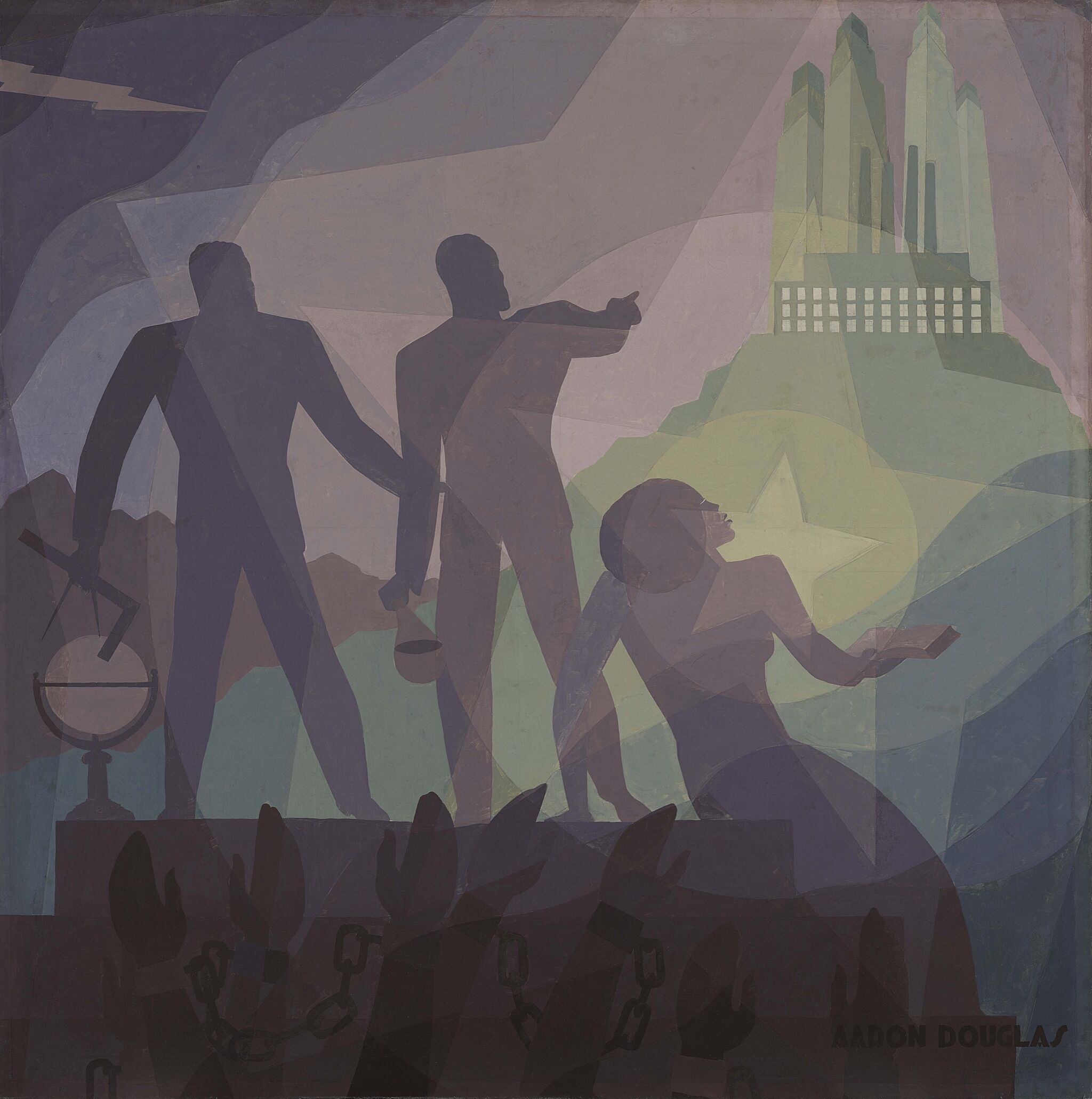
Viernes con Vida Americana: Arte mexicano y arte afroestadounidense
Friday, January 29, 2021
12 pm -
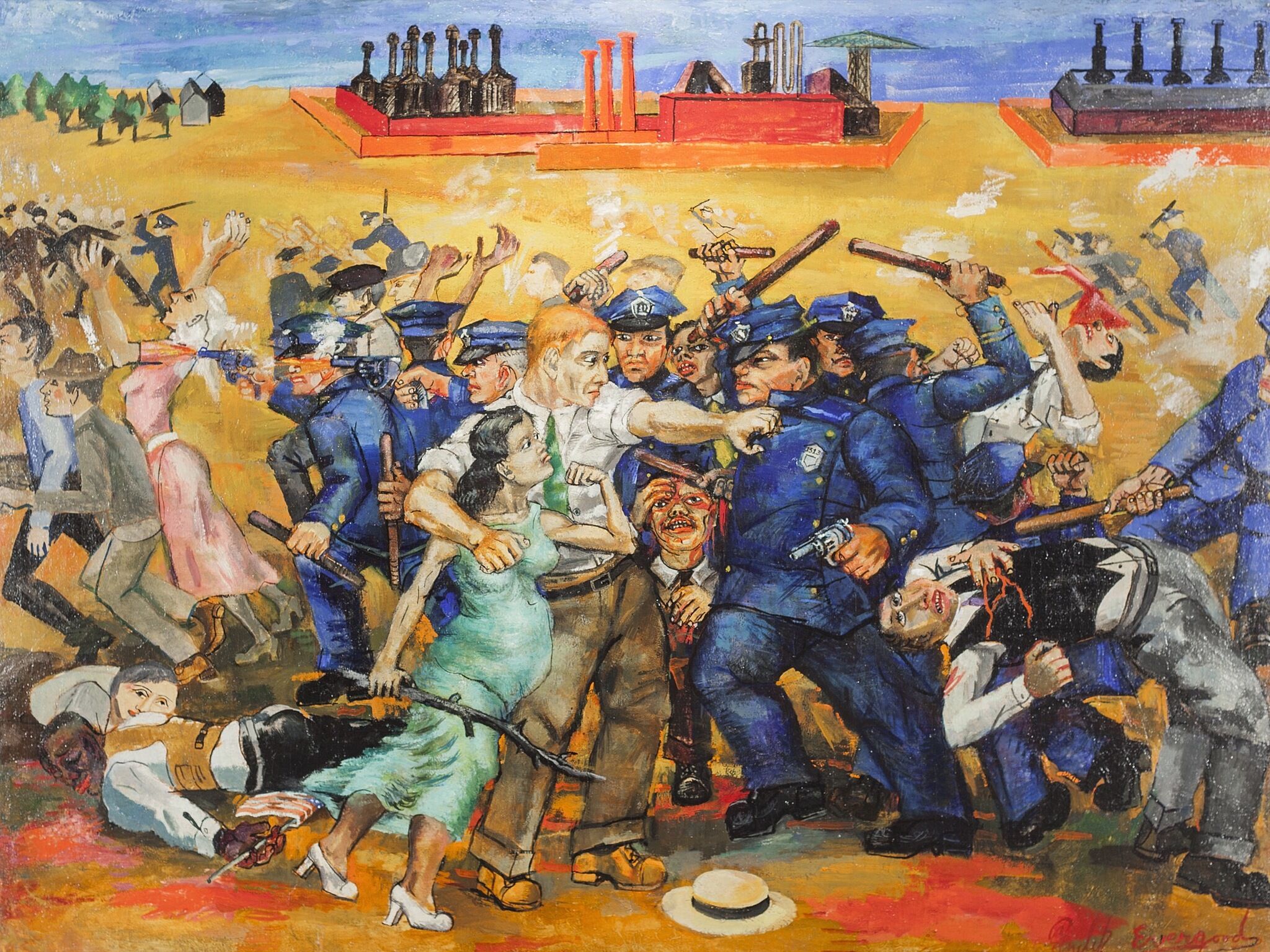
Art History from Home:
Art and ActivismThursday, January 28, 2021
12 pm -
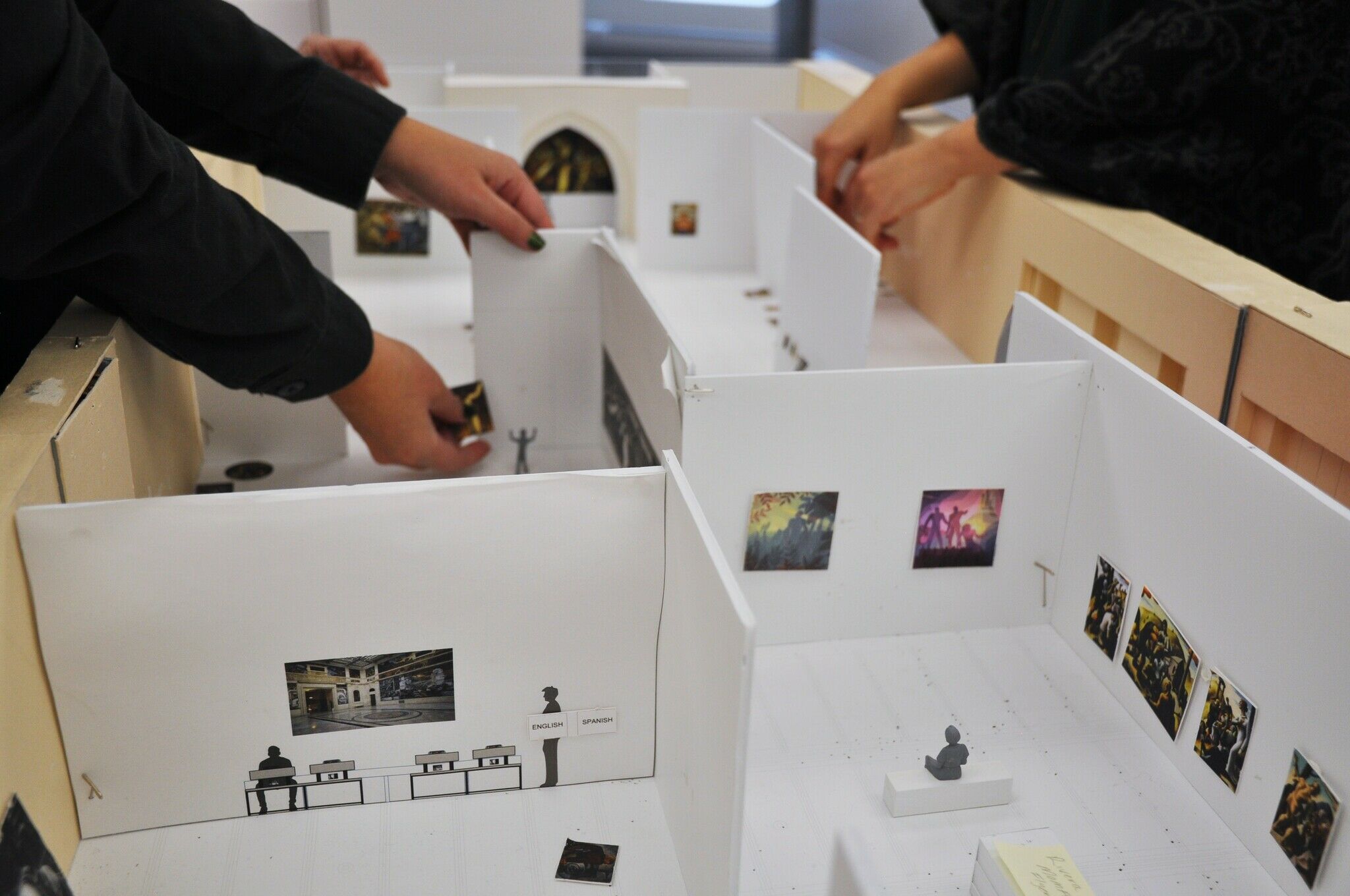
Behind the Scenes: The Making of Vida Americana
Tuesday, January 26, 2021
6:30–7:30 pm -
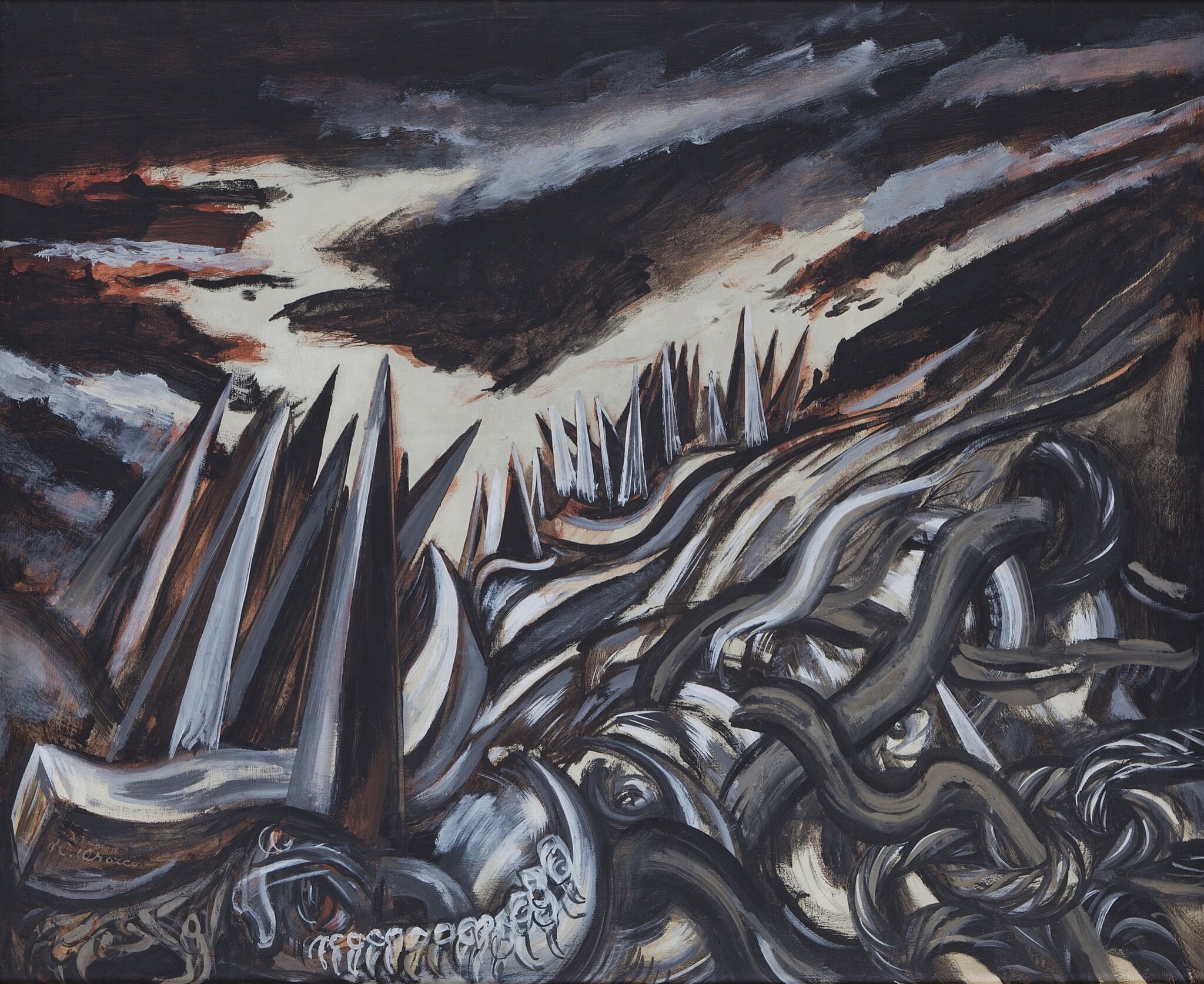
Viernes con Vida Americana: Los tres grandes y el arte estadounidense
Friday, January 22, 2021
12 pm
Mobile guides
“[Rivera] was fascinated by the ways in which man and machinery meet, and the ways in which they change the world together.” —Mark Castro
Hear from artists, scholars, and the curators of Vida Americana: Mexican Muralists Remake American Art, 1925–1945 speaking about works on view.
Exhibition Catalogue
The catalogue for Vida Americana: Mexican Muralists Remake American Art, 1925–1945 offers an in-depth look at the transformative influence of the Mexican muralists on U.S. artists during a period of tremendous social change. Edited by curator Barbara Haskell, the book also features essays by Mark A. Castro, Dafne Cruz Porchini, Renato González Mello, Marcela Guerrero, Andrew Hemingway, Anna Indych-López, Michael K. Schuessler, Gwendolyn DuBois Shaw, ShiPu Wang, and James Wechsler.
Buy now
Explore works from this exhibition
in the Whitney's collection
View 10 works
In the News
"‘Vida Americana’ Is the Most Relevant Show of the 21st Century" —Vulture
"The show is stupendous, and complicated, and lands right on time." —The New York Times
"[A]fter 'Vida Americana' the history of American art doesn’t remain quite the same." —The Wall Street Journal
"[S]hines a light on the Mexican artists whose politically charged, populist work shaped some of the most significant American artists of the 20th century" —Time
"The exhibition is a major statement from a museum devoted to the history of American art." —artnet News
"Beyond the wall: a golden period of exchange between Mexican and US artists is revisited" —The Art Newspaper
"Vida Americana reveals the seismic impact of Mexican art" —artdaily
"[A] gorgeous guide to understanding the importance of social realist muralism and the power of public art" —Juxtapoz
"[A]n eye-opening new exhibition" —CNN
"This show . . . added nuance and shading, making a fascinating historical episode seem more remarkable and unlikely than ever."—The Washington Post
"[S]heds light on the often-neglected influence that Mexican artists had in the earlier part of the 20th century on their American counterparts to explore social issues, injustices and new styles of painting." —amNewYork

